“Training to be soldiers
To fight for our land
Once in our life
Two years of our time
Have you ever wondered
Why must we serve?
Coz we love our land
And we want it to be free, to be free
Looking all around us
People everywhere
While they’re having fun
We are holding guns
Have you ever wondered
Why must we serve?
Coz we love our land
And we want it to be free, to be free
Stand up!
And be on your guard
Come on every soldier
Do your part
Do it for our nation
Do it for our Singapore”
After almost 18 years of active National Service (two-and-a-half years of full-time NS plus ten cycles of In-Camp Trainings), I finally received my precious MR (Mindef Reserve) certificate. Looking back, the unforgettable experiences were both fun and siong (tough). There were good and bad memories, as well as absolute nightmares in the confinements, devilish trainings and tekan by sadistic instructors. Memories of NS may be nostalgic to some, but most, if not all, will not want to go through it again.
NS life is a favourite chit chatting topic among male Singaporeans. Many like to reminisce their NS days, and compare whose units were the most siong. There are always countless tales to tell; from outfields and trainings to supernatural stuff.
Pre-Independence Period
The British colonial government first mooted the idea of national service in 1952. The bill, named the National Service Ordnance, was passed by the Legislative Council and was supposed to come into effect in 1954. The new law required the local men of ages between 18 and 20 to be called up for trainings at the Singapore Military Force (SMF) or the Civil Defence Corps (CDC). Those who failed to register would be fined or jailed.
However, most locals rejected the new law. Thousands of local Indians left Singapore, while the Chinese middle school students organised aggressive protests. In May 1954, the National Service Riots broke out. As many as 2,500 students locked themselves at Chung Cheng High School. Police marched in to quash the riots, but the colonial government eventually backed down and “postponed” the bill.
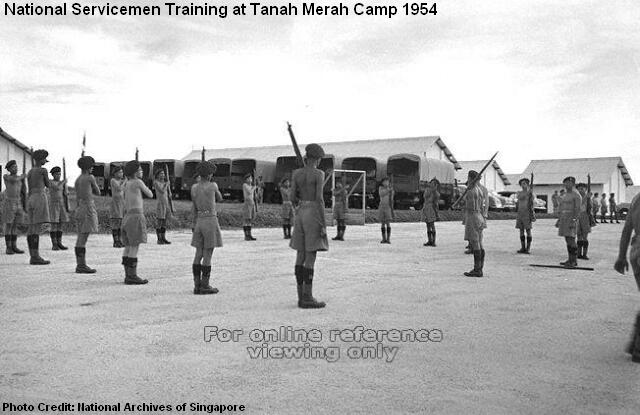
Even though the students successfully forced the authority to reverse their decision, dozens of them were injured and arrested in the riots. The Chinese middle schools, in the later years, even became a breeding ground for pro-communist elements.
Singapore’s First Battalion
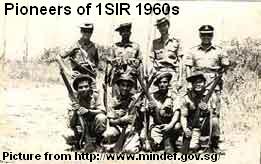 The history of local military regulars has gone a long way back. In April 1955, Singapore was given its first Legislative Assembly Election, with David Marshall (1908-1995) served as the First Chief Minister of Singapore. When Lim Yew Hock took over the partial self-government a year later, his hardline approach against the communists persuaded the British to grant Singapore more autonomy.
The history of local military regulars has gone a long way back. In April 1955, Singapore was given its first Legislative Assembly Election, with David Marshall (1908-1995) served as the First Chief Minister of Singapore. When Lim Yew Hock took over the partial self-government a year later, his hardline approach against the communists persuaded the British to grant Singapore more autonomy.
As the complete self-rule of the country became imminent, there was a need for Singapore to have its own military defence. On 12 March 1957, a total of 237 men born in Singapore was selected from an application pool of 1,420 to form the First Singapore Infantry Regiment (1SIR). Trainings of the new recruits were first carried out at Nee Soon Camp, which was still under the ownership of the British Army and was used to train their own forces.
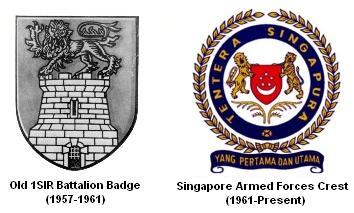 The officers and men were later based at Ulu Pandan Camp, but it took six years before 1SIR reached its full battalion strength of over 800 men. The early roles of 1SIR was mainly to engage internal security and maintain civil order with the police.
The officers and men were later based at Ulu Pandan Camp, but it took six years before 1SIR reached its full battalion strength of over 800 men. The early roles of 1SIR was mainly to engage internal security and maintain civil order with the police.
During the merging with Malaysia and the Konfrontasi period against Indonesia (1963-1965), 1SIR was posted to Perak, Sabah and Johor for jungle trainings and defensive missions. The experienced battalion later produced many commanders to train the new enlistees when NS started in 1967.
Compulsory National Service
When Singapore attained independence in 1965, there was an urgency for the newly born nation to have its own defence force. Its two existing battalions of regulars were clearly insufficient, but any expansion of the army would cost a lot of money and put a strain on the economy.
Finance Minister Dr Goh Keng Swee (1918-2010) was appointed as the first Minister for Defence to work on the proposal in building up a sizable voluntary force to back up the regulars. However, when the British indicated their intention to reduce their forces in Malaysia and Singapore in 1966, the need for compulsory national conscription with reservist became the long term plan.
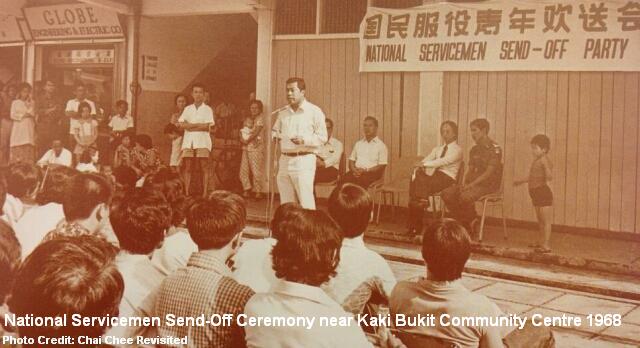
At the beginning, Singapore’s military development and directions were not determined. Several international case studies were conducted, and Switzerland was one of the considerations, based on the success of its economy and citizen army. In the end, Israel was deemed as a more suitable model. A secret pact with Israel was reached, with Israeli advisors flew in to train the first batch of graduates from the Singapore Armed Forces Training Institute in June 1967.
In the early days of Singapore’s independence, the military cooperation with Israel was never formally acknowledged, due to the sensitivity of a predominately Muslim region. The Israeli advisors, when arrived at Singapore, even had to take up the identities of “Mexicans” or “Indians”.

By January 1967, all new civil servants were required to undertake military training. A month later, the NS (Amendment) Act was passed in the parliament. On 28 March 1967, registration was first opened for all 18-year-old male Singaporeans. Only one tenth of the 9,000 applicants was selected for full-time NS due to the limited training facilities. The remaining was posted to part-time national service at the People’s Defence Force (PDF), the Special Constabulary and the Vigilante Corps.
The 900 selected personnel were officially enlisted on 17 July 1967, added to the newly-formed infantry battalions of 3SIR and 4SIR after weeks of basic military training (BMT). Subsequent batches of fresh enlistees soon followed, reporting at the community centres or the Central Manpower Base.
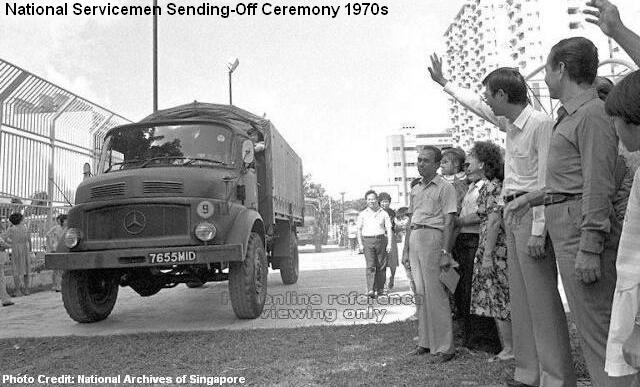
In the late sixties and early seventies, send-off dinners and ceremonies were regularly organised at the community centres to boost the morale and the commitment of the new national servicemen, whose loved ones would line up along the roads to witness their departures on the three-tonner trucks.
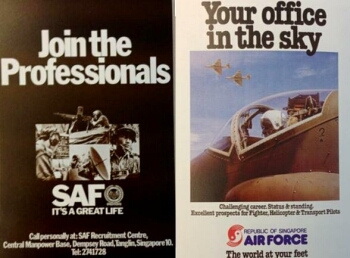 With the successful establishment of the additional infantry battalions and the new SAF Training Institute, other facilities such as the School of Artillery and School of Signals soon followed. In the late sixties, SAF also introduced its first scholarship program to attract the brightest talents to join the military as their careers. The university study fees and living expenses were offered in exchange for an eight-year bond with the armed forces.
With the successful establishment of the additional infantry battalions and the new SAF Training Institute, other facilities such as the School of Artillery and School of Signals soon followed. In the late sixties, SAF also introduced its first scholarship program to attract the brightest talents to join the military as their careers. The university study fees and living expenses were offered in exchange for an eight-year bond with the armed forces.
Singapore celebrated its first ever National Day on 9 August 1966. Six contingents, including the Singapore Infantry Regiment and the People’s Defence Force, marched past the building of City Hall, saluting then-President Yusof bin Ishak. Crowds of thousands cheered loudly as the troops continued their march to Chinatown and Tanjong Pagar. On 1st July 1969, Singapore also celebrated its first Armed Forces Day (SAF Day) to mark the armed forces’ loyalty and dedication to the nation. A 1,500-strong contingent of national servicemen and servicewomen was involved in the special day filled with parades and open houses.
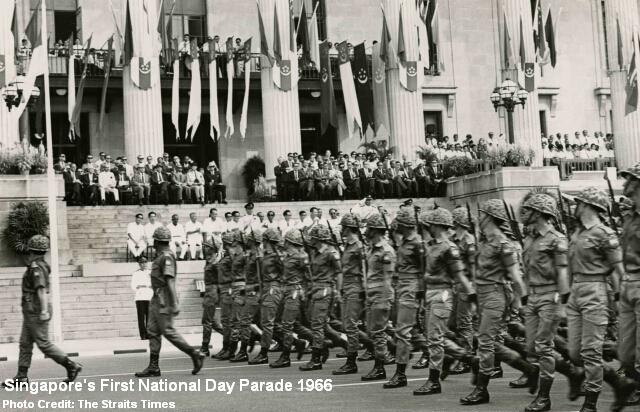
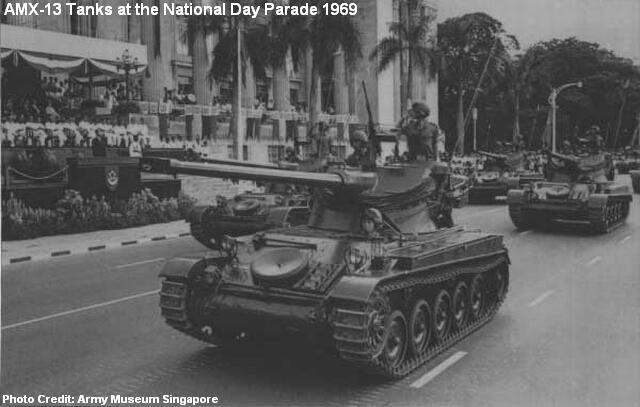
The national servicemen of the sixties and seventies, beside trainings, took part in many gotong royong (helping out in the communities) such as tree planting, rivers’ clean-up, debris removal in flood-affected areas and road repairs at kampongs. Many were also activated for major rescue operations, notably the Laju Crisis in 1974, the Spyros Disaster in 1978, the Sentosa Cable Car Accident in 1983 and collapse of Hotel New World in 1986.
MINDEF and CMPB
Before its split into Ministry of Defence (MINDEF) and Ministry of Home Affairs in 1970, it was the Ministry of Interior and Defence (MID) which took charge of SAF. The ministry was established in 1965 with only a small office at Empress Place as its headquarters. It was then shifted to Pearl’s Hill Barracks in early 1966, sharing the premises with the Central Manpower Base (CMPB) and the Police Headquarters.
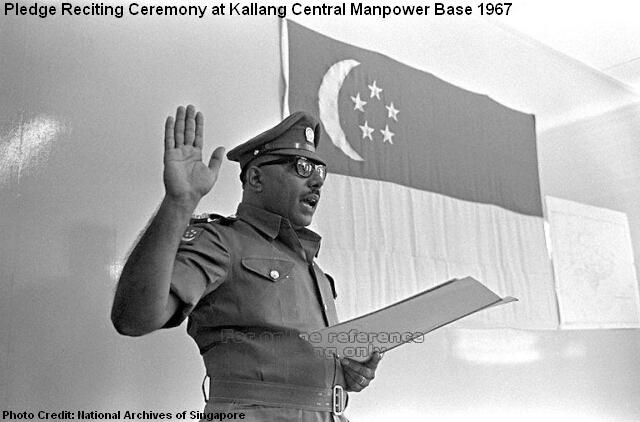
A year later, CMPB was moved to Kallang Camp. It was reunited with MINDEF at the Tanglin Barracks in 1972, after its buildings were left vacant by the departed British forces. This lasted 17 years until 1989, when MINDEF moved to its new headquarters at Bukit Gombak, while CMPB was relocated to Depot Road.
Training to be Soldiers
Before the official inauguration of the centralised Basic Military Training Centre (BMTC) in 1996, the recruits were trained in two major camps at Nee Soon and Pulau Tekong. A small number of other enlistees was recruited directly in units through the mono-intake system introduced since 1980.
To many, the Physical Training Instructor (PTI) was a terror figure during BMT. Daily routine of morning exercises included jumping jack, burpees, star jumps, pushups, situps, half squats and others. Waking up at 5.30am, the recruits gathered at the parade square to do 5BX (5 Basic Exercises) in the darkness, followed by a short run before they could have their breakfasts.
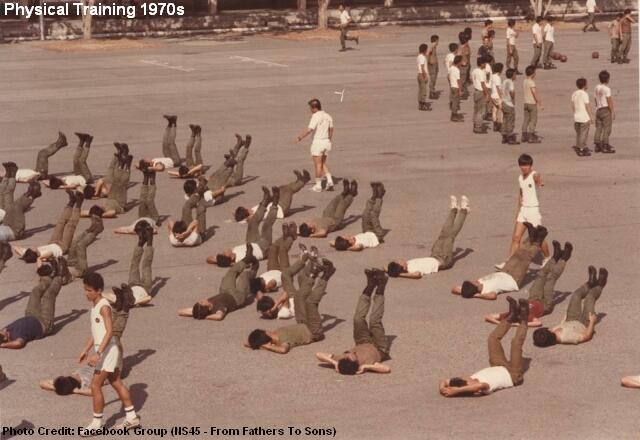
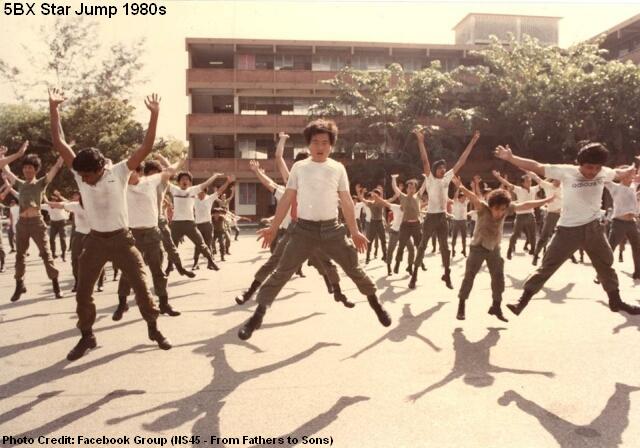
To do more than 200 pushups in a morning session of physical training was a norm in the nineties. After the tekan, the body would ache so much that many could not lift their arms while changing shirts. Threading water for several minutes in the swimming pool was another gruelling exercise. Nevertheless, the tough physical trainings ensured the national serviceman was kept at his best fighting-fit condition.

Today, the likes of log PT and medicine ball are banned. Even the role of PTI is being outsourced to commercial fitness outfits.
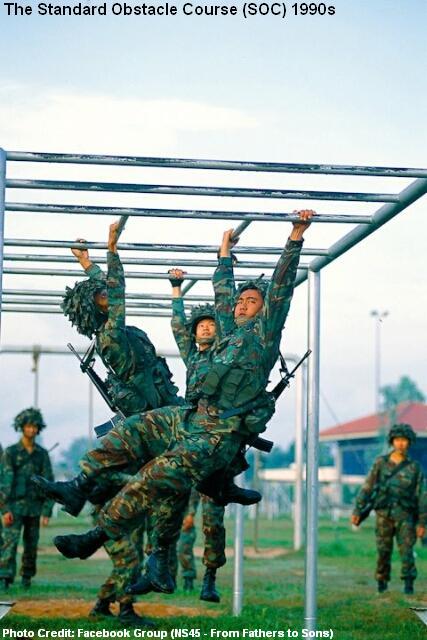
The Standard Obstacle Course, or SOC, was a nightmare for many.
Dressed in combat attire with SBO, helmet and rifle, this was one of the basic courses in BMT that a recruit must complete within 9 minutes.
A short 50m run was followed by a 1.83m low wall. Other obstacles were the monkey bars, stepping board, 3.5m rope, swinging bridge, balancing log, Jacob’s Ladder and a low ramp with concertina wires.
After clearing all the obstacles in this “military playground”, the recruit had to run another 600m before finishing the physically-demanding course.
The Battle Inoculation Course (BIC) was an interesting course a recruit had to go through in his BMT. It was a simulation of a battlefield environment during wartime, and the trainees had to get past barbed wires by doing leopard crawling and back crawling with live rounds flying above them. After an exhausting 90m of crawling and wiggling in the mud, the recruits would have to gather all their might to make a final charge at their “enemies”.

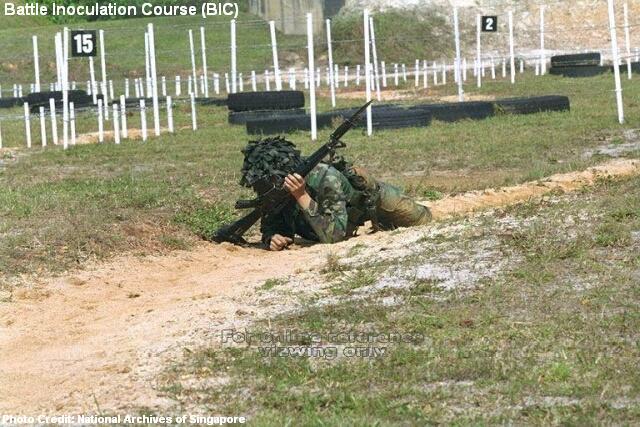
Many older Singaporeans would be familiar with the hand grenade training in BMT, influenced by the classic SBC drama The Army Series (新兵小传) in 1983, in which veteran actor Huang Wenyong played an acting role as a lieutenant who lost his life while saving a recruit during a hand grenade training.
In reality, the course was not as dangerous as it seemed. Trainees had to be familiarised through repeated throwing practices with a dummy grenade before they could actually try the real thing. Standing behind a concrete barrier, the recruit had to release the safety pin before throwing the live grenade and witnessing its explosion six seconds later.
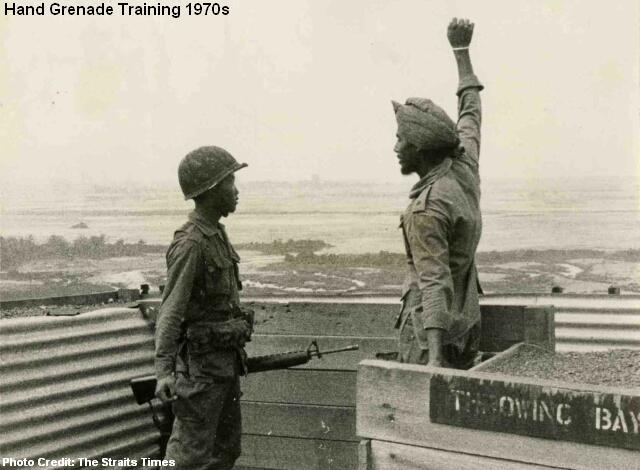
The instructor must keep his calm at all time, but even the most experienced ones would be unnerved by three types of recruits, namely the blur sotongs, the gan cheong spiders and those with sweaty palms!
Chemical Agent Training used to be one of the courses in BMT. Trainees donned in masks and full body suits had to go through a tear gas-filled chamber. The worst experience was not the eye-burning sensation caused by the tear gas but the sight and smell of those stains of tears, saliva and mucus on the used mask!
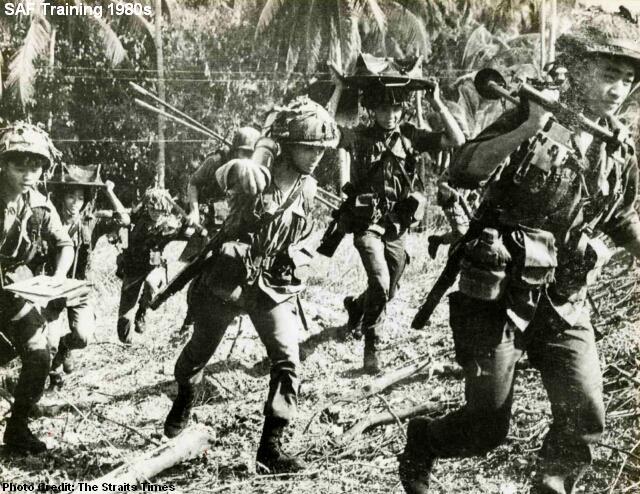
The eight-week BMT was rounded off with a six-day field camp and a 24km route march in FBO (Full Battle Order). But it was not over yet! In fact, it was just the beginning of a two-year (two-and-a-half year previously) National Service. Different batches of national servicemen, depending on their vocations, went to experience different types of training courses.
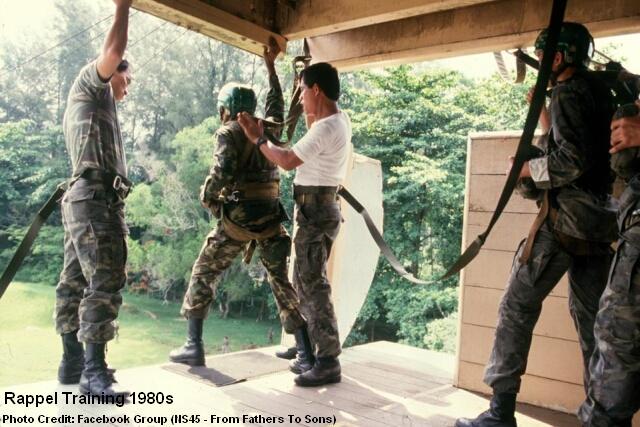
Cheong sua, literally “means charging (up) the hill” in Hokkien, is a phrase used to describe basic infantry training. The tactical movement was by no means an easy feat. Many national servicemen could recall their exhausted days at the notorious Peng Kang Hill and Elephant Hill (at Pasir Laba) and Botak Hill (at Pulau Tekong).
In the 1970s, there were many small knolls at the training area between Woodlands and Mandai, such as Hill 180 and Hill 255, which were named according to their heights (in feet). The most famous was perhaps Hill 265 with its steep barren slopes covered with orange mud. Part of it was flattened in the nineties due to the construction of the Seletar Expressway (SLE).
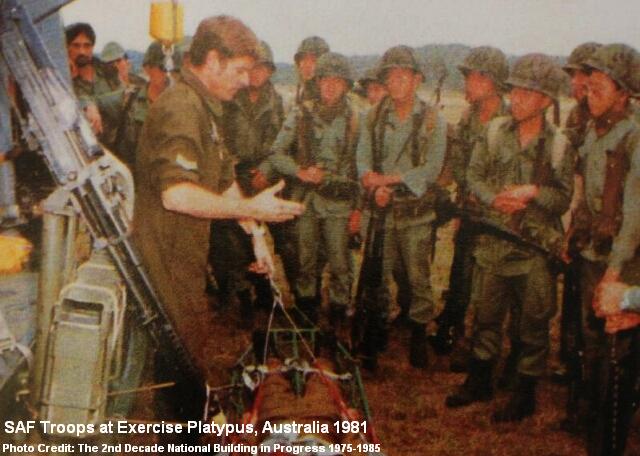
Not all national servicemen had the chance to experience it, but for those who did, the oversea exercises at Brunei were unforgettable experiences, or nightmares. Its thick and dense jungles made Singapore’s Mandai or Sungei Gedong look like playgrounds.
Wearing sweat-drenched No. 4 and carrying heavy weapons, the soldiers had to trek long distances over hilly areas filled with commando-trained mosquitoes, sand flies, armies of giant ants and, occasionally, some mean-looking centipedes. As if the physical toil was not enough, there were also rumours that the jungles contained many restless souls of previous National Servicemen who got lost in the thick vegetation and never made it back home.
Life in the Army Camps
Beside combat trainings and physical exercises, national servicemen had to learn to adapt to routine life in the army camps, sharing bunks with each other and working hand in hand to ensure the required disciplinary standards were met.
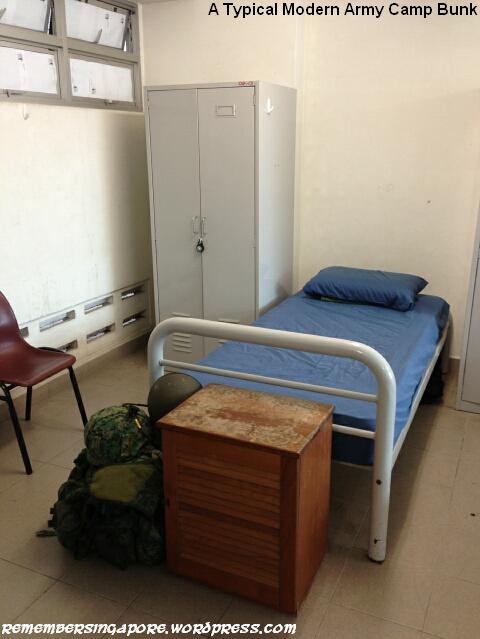 Unlike today, the past national servicemen had to do all the area cleanings themselves, taking turns to wash the toilets, empty the drains and clear the dry leaves on the carparks. Beds had to be made each morning with wrinkle-free bedsheets. The boots must be polished gilat gilat, and displayed neatly along with the shoes and slippers by the beds. The items in the cupboards should be placed in their orders, with the shelves kept dust-free.
Unlike today, the past national servicemen had to do all the area cleanings themselves, taking turns to wash the toilets, empty the drains and clear the dry leaves on the carparks. Beds had to be made each morning with wrinkle-free bedsheets. The boots must be polished gilat gilat, and displayed neatly along with the shoes and slippers by the beds. The items in the cupboards should be placed in their orders, with the shelves kept dust-free.
The two-week confinement period during BMT was perhaps the most restricted period for the national servicemen. In those days without internet or handphones, the connection with the outside world was basically cut off. At nights, the recruits queued up in long lines at the coin phones, while others tried to find pleasure listening to their walkman. Leisure time was short anyway, as the lights had to be off by 10pm.
Despite the authority’s denial, the existence of “white horse” was never in doubt. Those who had the “luck” to be part of a BMT platoon or company with a “white horse” would enjoy more canteen breaks and less punishments!
Life in the units was generally better, but new birds were likely to be tekan with constant stand-by-bed, turn-outs (in the middle of the night) and change parades in their first few weeks. The worst of all was the falling-in of beds’ and cupboards’ at the parade square. Imagine carrying those heavy and bulky cupboards up and down three or four levels. Luckily for the new national servicemen, this sadistic practice is banned today.
Rifles as Wives
On the first day when M16 (or SAF21 today or AR15 before the 1980s) was handed to a recruit, he was taught that he must treat the 3.3kg weapon like his wife.
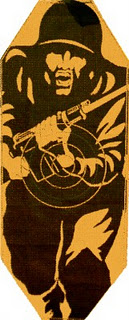 It was a grave mistake to lose one’s rifle. Without his weapon, a soldier was like a vulnerable sheep during the war. During an outfield exercise, the weapon must be slung by the side at all times, even during sleeping. The sergeants would not hesitate to “steal” the rifle from any careless soldier, and a “lost” weapon would mean extra confinement and burnt weekends.
It was a grave mistake to lose one’s rifle. Without his weapon, a soldier was like a vulnerable sheep during the war. During an outfield exercise, the weapon must be slung by the side at all times, even during sleeping. The sergeants would not hesitate to “steal” the rifle from any careless soldier, and a “lost” weapon would mean extra confinement and burnt weekends.
There were many M16-related trainings. For the fitness part, a M16 (or the heavier dummy weapon) was often used to train the endurance and the strength of the arms. In close combat trainings, a recruit also learned, in times of ammunition shortage, how to pierce the target with the bayonet fixed at the end of his M16, or hit the target with the rifle butt. In reality, it seems a better idea to lie low or retreat when your rounds are exhausted.
To many, shooting range was one of the most enjoyable activities in NS. But the excitement of firing live rounds and hitting the targets was often offset by the fear of punishment due to misfiring or other silly mistakes in the range. And not forgetting the exhausting moment during that 300m run down. A shooting range exercise usually took a day to complete. The difference between marksmen and bobo shooters became more obvious during the night shoot.
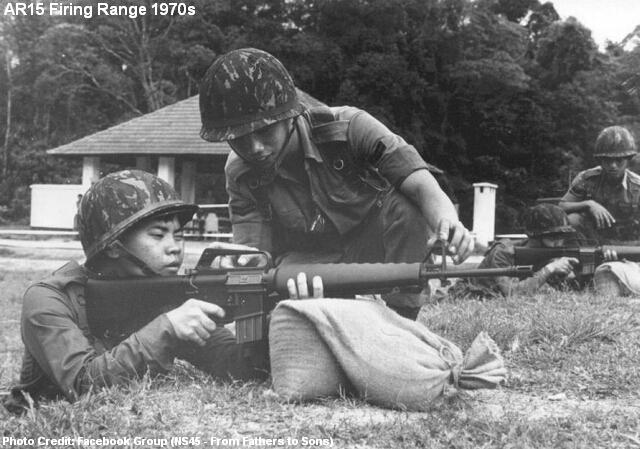
The arrival of the ninja van, with its fried bee hoon, nasi lemak and soft drinks, was perhaps the best consolation in an otherwise boring range where sections of trainees sat on long wooden benches waiting for their turns. The nickname of ninja van probably derived from its ability to find the starving troops in ulu camps and training grounds.
There were much to do after a shooting range exercise. Empty cartridges had to be picked up; rifles had to be cleared, cleaned, oiled and checked before returning to the armskote. By then, the soldiers were already shack out.
The Military Identity
The SAF 11B is a military identification card all active national servicemen must possess. The predecessor of 11B was 11A, which was phased out two years after the introduction of 11B in 1981.
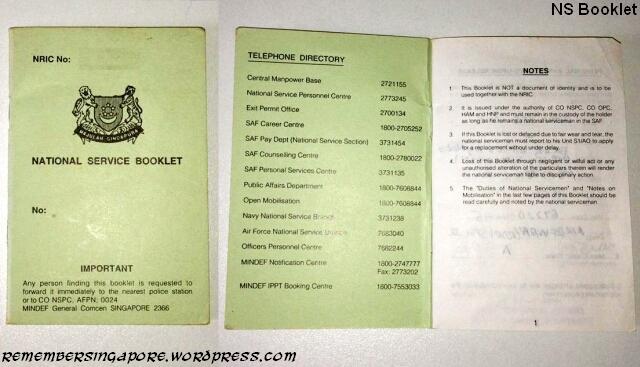
The little green NS Booklet was replaced by the convenience of the online NS Portal in the early 2000s. National servicemen no longer need to refer to their booklets on their total number of high-key and low-key ICTs.
The Defence Industry
The first Minister for Defence Dr Goh Keng Swee was also the chief architect in the development of local defence-related companies to support SAF. One of its first in the industries, Chartered Industries of Singapore (CIS) was established in 1967 to supply 5.56mm ammunition rounds for the M16 rifles.
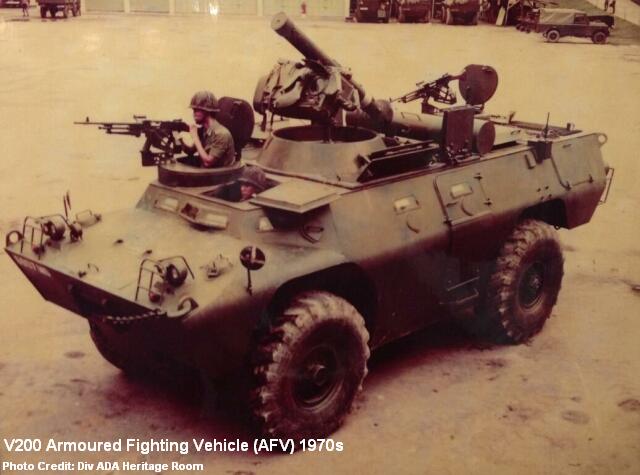
In 1969, Singapore bought 72 French-made AMX-13 tanks and 170 V200 armoured vehicles. The purchase was significant, as it kicked off a program of continuous upgradings in the history of SAF.
The late sixties and early seventies also saw the formation of Singapore Shipbuilding & Engineering (SSE), Singapore Electronic & Engineering Limited (SEEL), Singapore Automotive Engineering (SAE), Singapore Food Industries (SFI) and SAF Enterprises (SAFE).
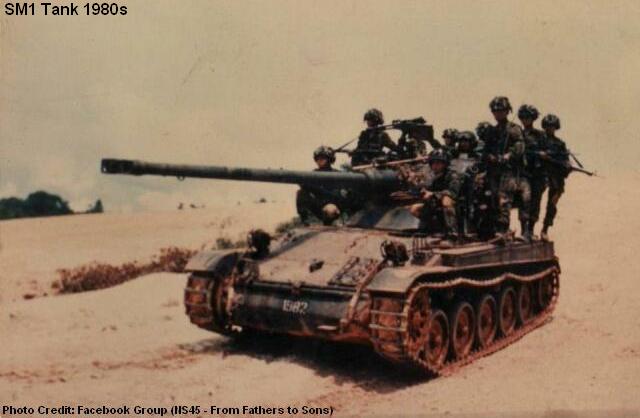
These supporting companies provided SAF with maintenance services in communication and electronic equipment, military vehicle servicing, engineering and design, and even daily food supply to the SAF soldiers.
Evolution of SAF Cookhouses
The sight of military chefs, metal trays and green plastic mugs represented the days before the commercialisation of SAF cookhouses in 1997.
Hungry soldiers risked facing the wrath of cooks who were frustrated by long hours of work and oily environment, whose sweat would sometimes trickle down into the large pot while they were stirring the rice. A request for more vegetable? The emotionless cook would just dump a big load onto your tray, spilling over onto your fingers.
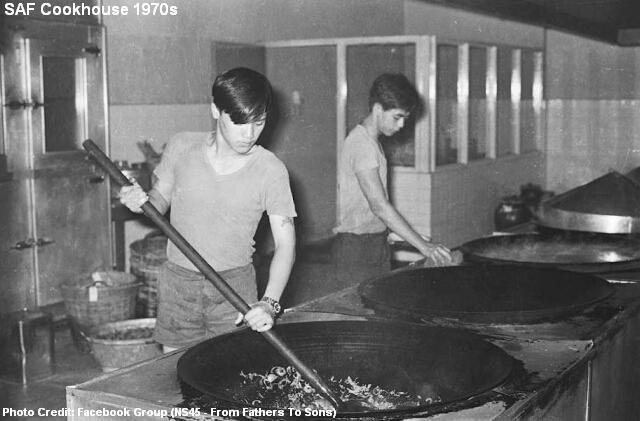
Daily meals of just rice, meat and vegetable were a norm. On occasional days, there would be fish ball noodles, but the noodles tasted more like rubber bands than anything else. During BMT, recruits had to take turns to wash the cookhouses and clear the garbage too. Canteen breaks became a valuable treat, as the national servicemen looked to avoid cookhouses at all cost.
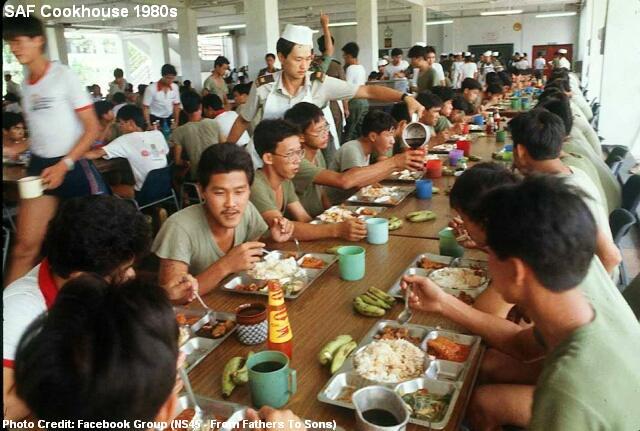
The plan of outsourcing to civilian caterers was proposed as early as 1984, due to the declining number of young male Singaporeans entering the national service. However, the commercialisation of SAF cookhouses was not finalised until 1997.
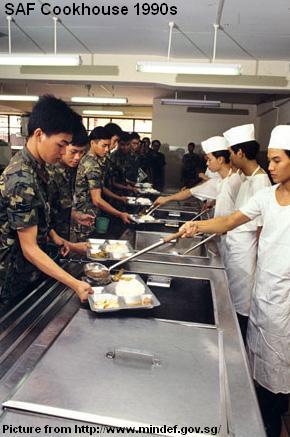 Two catering companies Singapore Food Industries Manufacturing (SFIM) and Foodfare Catering (FFC) were contracted to manage 60 SAF cookhouses and provide a wide range of food to the National Servicemen, who were treated with safer food preparation and healthier choice of food.
Two catering companies Singapore Food Industries Manufacturing (SFIM) and Foodfare Catering (FFC) were contracted to manage 60 SAF cookhouses and provide a wide range of food to the National Servicemen, who were treated with safer food preparation and healthier choice of food.
The environment-friendly packaging and higher quality and lighter combat rations also made it convenient for the soldiers during their outfield exercises. The cans of baked beans, hard tack biscuits and melting chocolates were replaced by commercial off-the-shelf snacks and beverages that could be found in the supermarkets.
Today, the national servicemen enjoy different daily menus such as chicken rice, nasi bryani, pasta and even fish and chips.
Temasek Green, Camouflaged and Pixelised
Temasek Green, the first generation of SAF combat uniform debuted in 1967, replacing the old military clothing formerly used by the British. The uniform, which was made of thick cotton and had two pockets for the shirt and three for the pants, was modified in 1977 with a darker green tone, baggier in size and an addition of two extra shirt pockets.
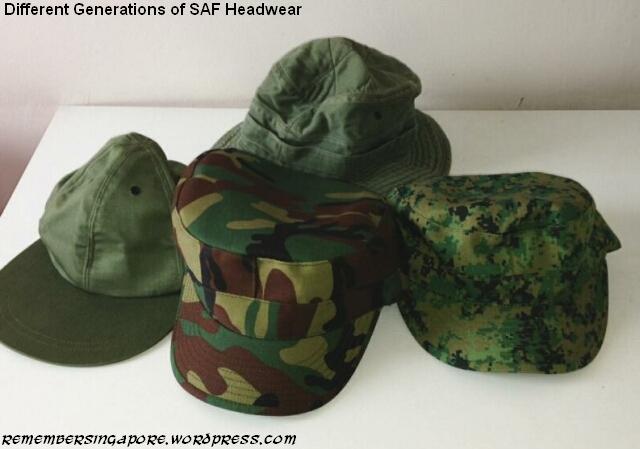
In 1983, the old Temasek Green uniform was replaced by the camouflaged type. Its colour fastness, however, was poor and the camouflage patterns faded easily after repeated washings. A new version made by a different material was introduced in 1985. Lighter in weight and had better air permeability, the second generation of SAF uniform lasted 25 years before being replaced by the latest 3G uniform with pixelised patterns.
With the introduction of the No.3 uniform in 1982, the parade days of the starch-stiff Temasek Green were all but memories. New monotone PT kits also made their way into SAF in 1995, replacing the old camouflaged ones.
Army Ghost Stories
Ghost stories always ranked high in the list of common topics among national servicemen during chit chatting sessions, especially if they were stationed in an old ulu camp.
The most famous of all was the legendary three-door bunk of Charlie Company at Pulau Tekong. The story managed to find its way between batches and generations even though the unfortunate incident happened more than 30 years ago and the creepy bunk no longer exists today.
Prowling around the old Tekong camp at night was never fun, especially when there were rife rumours of a weeping female ghost in white dress sitting on the Jacob’s Ladder. Another popular ghost story in NS was the spirit of an old man walking around at night with his granddaughter. Their footsteps could be heard from afar, but the next moment you could sense them standing beside your bed.
“This one not asleep yet!” the granddaughter mocked, pointing to those who closed their eyes tightly pretending to sleep.
What about the famous haunted White House at Nee Soon Camp? Sounds were always heard at night, yet the building was empty when the prowlers checked it out. Or that poor soul of a soldier who had to return to the same level of the building every night to repeat his suicide. And when a pack of dogs gathered and howled at the chin up bar, there were whispers that it was due to the spirit of a national serviceman who hanged himself at the bar many years ago.
Colourful NS Lingo
Singapore is a place full of acronyms and abbreviations, such as PIE (Pan-Island Expressway), ERP (Electronic Road Pricing) and MOE (Ministry of Education). Likewise, SAF itself has many abbreviations. With the addition of our unique Singlish, a list of colourful NS lingo is born.
 Hokkien used to be a common language used during SAF trainings. It was, however, banned in October 1978. Only English, Malay and Mandarin were allowed. But as the old army saying goes: “Do whatever you want, just don’t get caught“, the widespread usage of Hokkien, especially the vulgarities, has continued to this day.
Hokkien used to be a common language used during SAF trainings. It was, however, banned in October 1978. Only English, Malay and Mandarin were allowed. But as the old army saying goes: “Do whatever you want, just don’t get caught“, the widespread usage of Hokkien, especially the vulgarities, has continued to this day.
Some common phrases seemed to be frequently used by most instructors. Eg, during a run, the instructors like to say sarcastically: “Walk some more! Never mind, take your time” or “My grandmother can run faster than you“.
During a tekan session: “Whole lot knock it down!“, “I can’t hear you!“, “Shack right? Cannot think properly isn’t!?“. Other favourite phrases include “You think I thought who confirms?“.

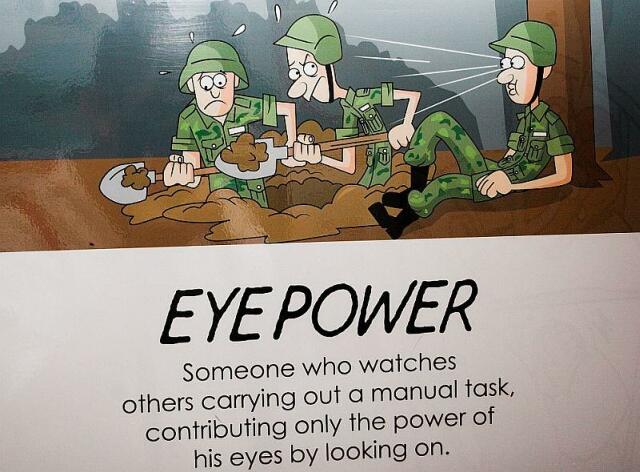

ROD (Run Out Date), arguably the most significant acronym to any national serviceman, was changed to ORD (Operational Ready Date) in July 1994.
NS Sing-a-Long
“Any Sweat? No Sweat! Chicken feed, ha ha all the way!”
Little was known of how the NS songs came about. Some were perhaps passed down by the British during the colonial era, while others might be created by some talented local national servicemen in the seventies and eighties. Nevertheless, the songs aimed to boost the morale of the soldiers during a run or a route march. Who forget the 24km BMT graduation route march, where everyone sang in high spirits (at the start) and encouraged each other to complete the feat?
“C130 rolling down the street
Airborne rangers take a little trip
Stand up hook up shuffle to the door
Jump right down by the count of 4
If this chute doesn’t open wide
I have another one by my side
If this one doesn’t open too
Then you all can see me die
If I die in a Russian front
Bury me with a Russian gun
If i die in a Vietnam war
Send me back to Singapore
Tell my major I’ve done my best
Silver wings upon my chest
Tell my mama I’ve done my best
Now its time to take a rest”
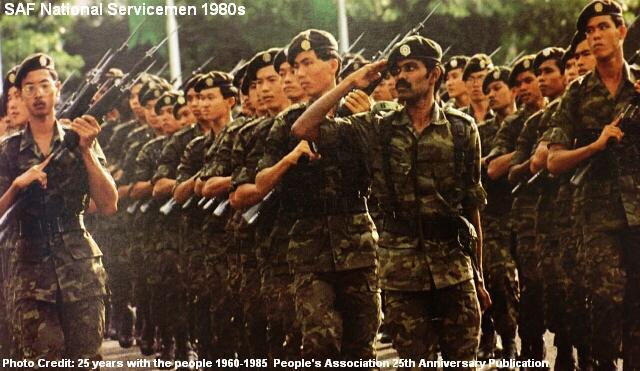
“Purple light, in the army
That is where, I wanna be
Infantry, best companion
With my rifle and my buddy and me
SOC, sibei jialat
Log PT, lagi worse
Everyday, doing PT
With my rifle and my buddy and me
Booking out, saw my girlfriend
Holding hands, with another man
Broken heart, back to army
With my rifle and my buddy and me
ORD, back to studies
Get degree, so happy
Can’t forget, still remember
With my rifle and my buddy and me
Purple light, in the war front
There is where, my body dies
If I die, would you bury
With my rifle and my buddy and me”
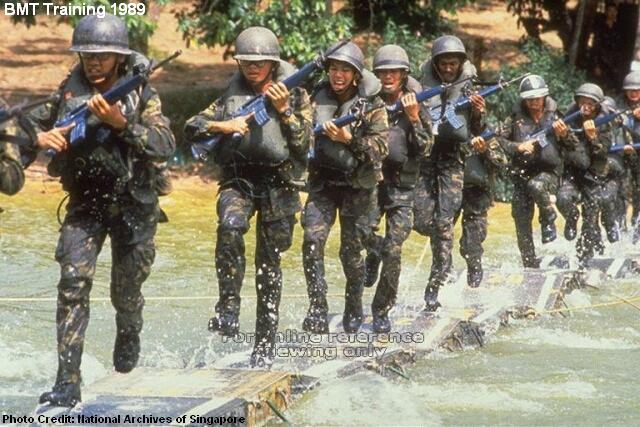
“Far far away in the South China Sea
I left a girl, with tear in her eyes,
I must go where the great men fights ya
A soldier has to fight the front because he love his land ya
A soldier has to fight even his has to die!
Coz we are the one who fight the front
And we are the one who holds the gun,
We are mighty warriors from this land ya
Alpha warriors marching in hoorah hoorah
Alpha warriors marching in hoorah hoorah
Coz we are the one who fight the front
And we are the one who holds the gun,
We are mighty warriors from this land ya”
“Everywhere we go-o
People want to know-o
Who we are
Where we come from
So we tell them
We are from (name of platoon/company/battalion)
Mighty, mighty (name of platoon/company/battalion)
And if they can’t hear us
We sing a little louder”
Army Camps in Singapore
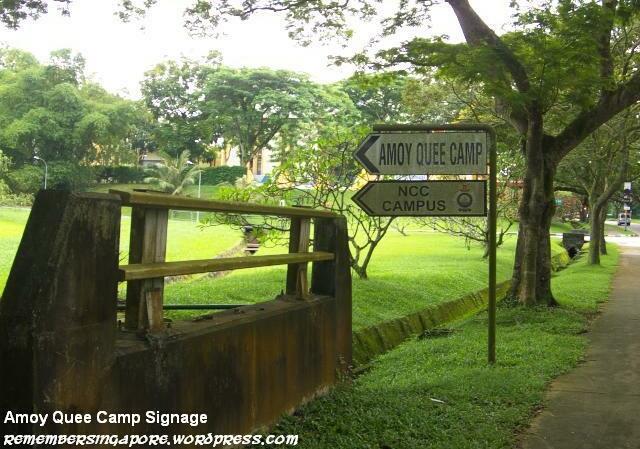
There are over 100 army camps and military bases in Singapore. Many were built by the British during the colonial era, while the rest were formed by the Singapore Armed Forces after independence. Below are brief descriptions of some of the old and former camps in Singapore.
Ayer Rajah Camp (1940s-2010)
Located at Portsdown Road, the Ayer Rajah Camp was well known as a servicing and vehicle maintenance camp. It was formerly part of the British’s Pasir Panjang Complex that also included the Gillman Barracks and Alexandra Camp. The camp was first home to the British Royal Electrical and Mechanical Engineers, which provided maintenance services to the British military vehicles before the Second World War.

After the war, the camp was taken back from the Japanese forces and placed under British control for another 27 years before they departed in 1971. It was then handed over to SAF’s Ordnance Maintenance Base (OMB). In the eighties, the Headquarters (HQ) Maintenance and Ordnance Engineering Training Institute (OETI) moved in to share the premises with OMB, which was reorganised as General Support Maintenance Base (GSMB).
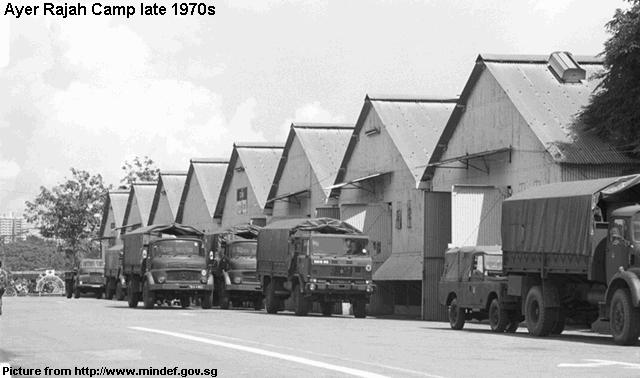
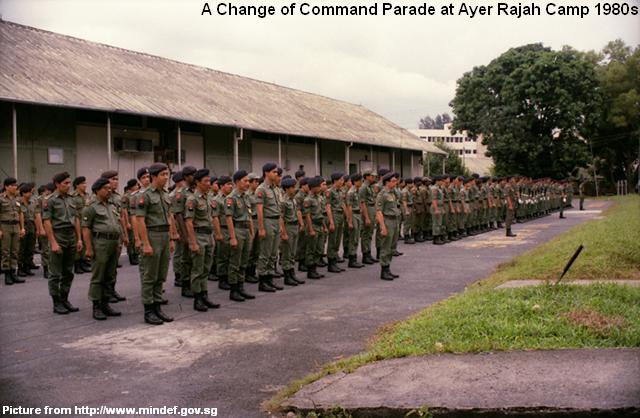
In 2010, the camp was closed and its site was returned to the State. Its premises will be leased to MediaCorp in 2014.
Beach Road Camp (1930s-2000)
One of the few former military camps situated in the City, the Beach Road Camp was built on reclaimed lands and originally standing just beside the coastline. Its Art Deco-styled buildings were functioning as the headquarters for the Singapore Volunteer Corps (SVC), which was formerly located at Fort Fullerton.
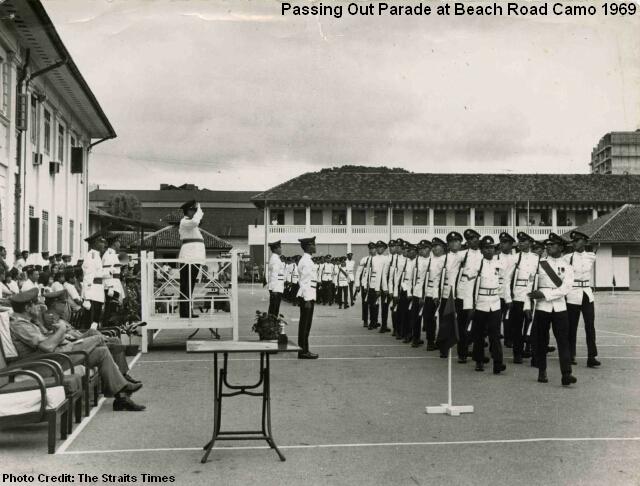
Beach Road Camp played a significant military role in the early days of Singapore’s independence. It served as the main registration centre for the early batches of NS enlistees, and was home to several SAF units such as the infantry regiment, signal unit and provost company. The People’s Defence Force (PDF), formerly SVC, retained the camp as its headquarters.
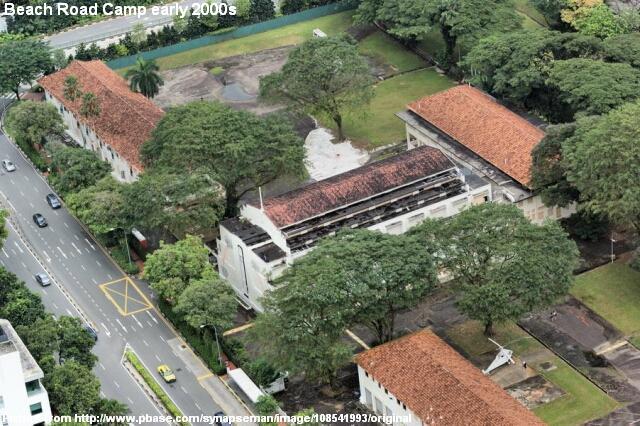
By the mid-nineties, it became apparent that Beach Road Camp would be shifted due to its location in the prime land district. In 2000, the camp was officially shut down. Its three colonial buildings Block 1, 9 and 14 were given conservation status in 2002, while its plot of land, along with the former NCO club, was sold to private developers of hotels, offices and residences.
Blakang Mati Artillery Barracks (1910-1972)
Built in 1910, the Blakang Mati Artillery Barracks on present-day Sentosa was part of the British’s defensive facilities for the southern coastline of Singapore. The island and the barracks, however, fell to the Japanese forces during the Second World War, and were used as a prisoners-of-war camp.
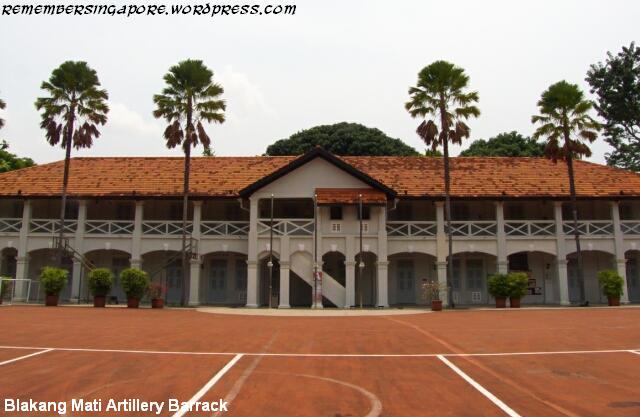
Singapore’s first artillery division First Singapore Regiment Royal Artillery was established at Blakang Mati Artillery Barracks in 1948. It also housed the Singapore Naval Volunteer Force, School of Maritime Training and Naval Medical School after Singapore’s independence. But SAF’s control of the barracks lasted only until 1972, when the government decided to develop the island for leisure and tourism.
The barracks were abandoned for many years until recently, when the site was put up for sale for a hotel development project.
Changi Command Barracks (1935-1990s)
Standing proudly on Fairy Point Hill, the former Changi Commando Barracks was once an integrated part of the British’s naval and air defence strategy against any potential invasions at the eastern part of Singapore. Constructed in 1935, it was originally a command building for the British Royal Engineers.
In 1971, the vicinity became part of the Commando Unit’s premises when the SAF elite troops were relocated from Pasir Laba Camp to Changi Camp. Two years later, the unit was strengthened with its first NS battalion, supported by a new school and headquarters. The iconic colonial building on Fairy Point Hill was used as the HQ office for the Commandos.

When Hendon Camp was officially inaugurated in 1993 as the new home for the Commandos, Changi Commando Barracks was abandoned for many years. In 2002, it was given the conservation status, and the premises are now part of a new hotel development project.
Guillemard Camp (1969-2003)
The former Guillemard Camp was home to 1SIR, Singapore’s first military unit. It was established at the start of 1969 for the relocation of 1SIR from Taman Jurong Camp. Generations of recruits had gone through intensive infantry training at the small Guillemard Camp for past 30-plus years.
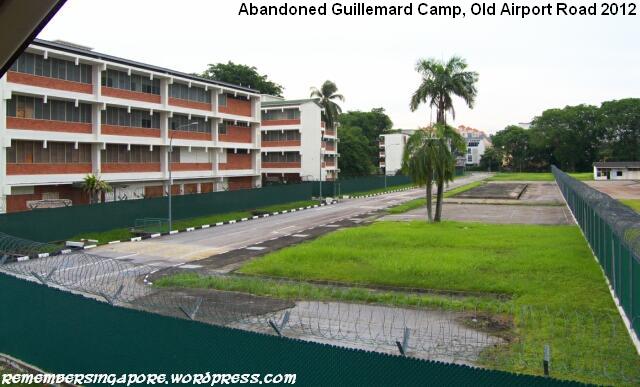
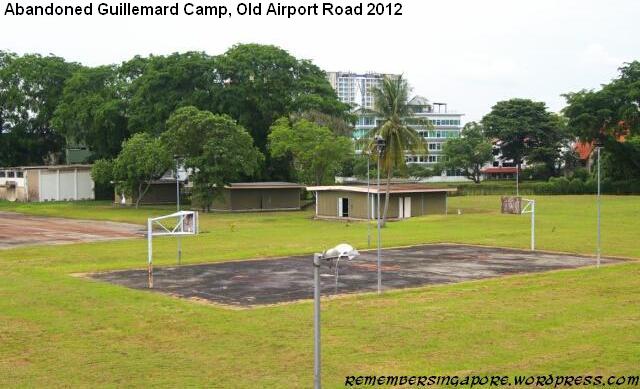
The camp stayed relatively the same despite the changes in its surroundings, where blocks of residential flats popped up along Old Airport Road and Dakota Crescent. Due to the limitation in space and aging training facilities, its operations were finally ceased in in 2003, with 1SIR shifted to Mandai Hill Camp. The plot of land has since been reserved for future housing development.
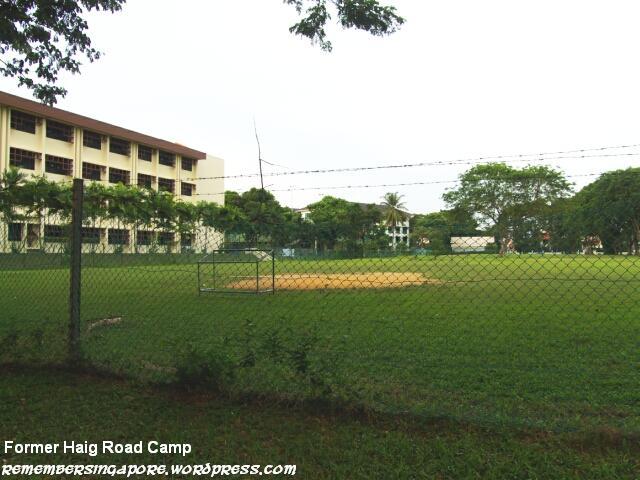
As the population increases, the growing need for more residential development means those old redundant camps have to make way. In recent years, the likes of Haig Road Camp, (Old) Keat Hong Camp and Simon Road Camp were demolished for the construction of public flats and condominiums. As the old barracks were being torn down, they vanished together with the memories of many generations of national servicemen once stationed at those camps.
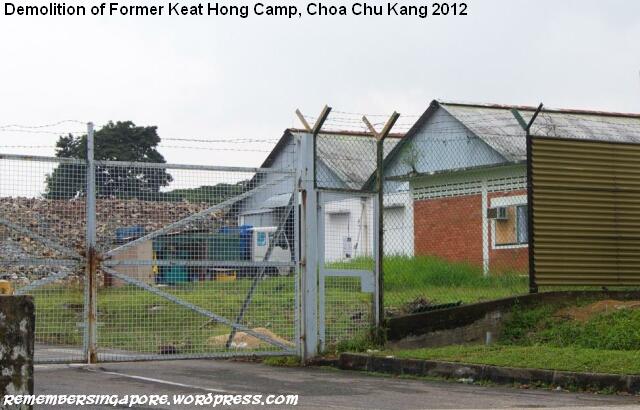
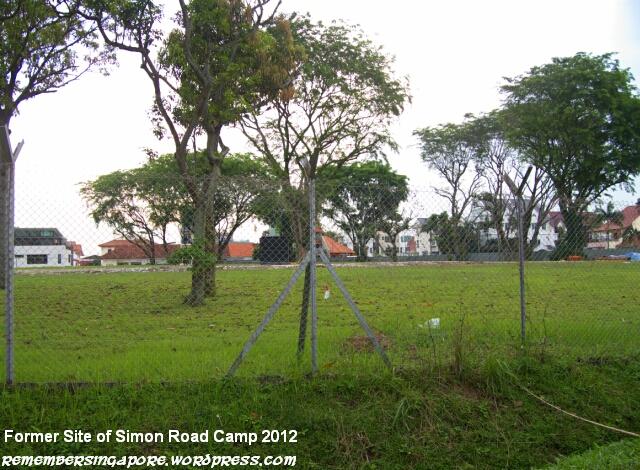
Mowbray Camp (Old) (1937-2002)
The old Mowbray Camp at the junction of Ulu Pandan Road and Clementi Road was a former British camp that used to house its guard contingent. It was, however, more well-known for being the home of the SAF Provost Unit between 1971 and 2002. SAF Provost Unit was first established in 1966 at Beach Road Camp, before moving to Hill Street Camp and finally settled at Mowbray Camp for 31 years.
The mentions of MP (Military Police) and DB (Detention Barracks) had struck fear into the hearts of many generations of national servicemen. SAF’s first military detention cells were set up at Beach Road Camp together with the SAF Provost Unit in 1966. By the eighties, there was a total of four major detention barracks in Singapore (Kranji, Nee Soon, Changi and Tanglin). In 1987, the SAF Detention Barracks was officially opened as a centralised military prison, replacing the other old detention barracks.
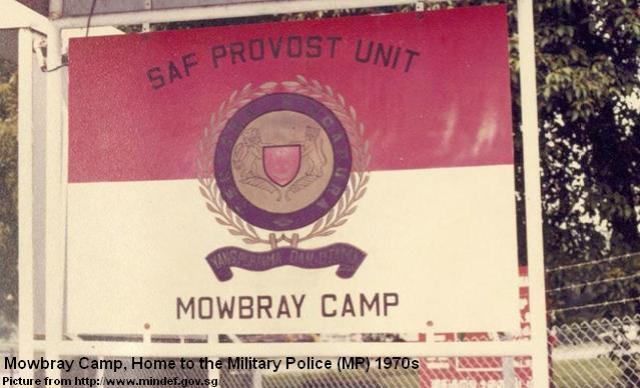
Mowbray Camp was also home to Home Team’s canine unit. The Police Dog Unit was stationed here as early as the 1950s, before being linked up with the Customs & Excise Department’s canine unit (in 1987), the Prisons Department’s canine unit (1995) and the Singapore Civil Defence Force’s Rescue Dog Section (1997).
In 2002, the SAF Provost Unit moved to the new Mowbray Camp at Choa Chu Kang Way.
Nee Soon Camp (1934-Present)
Located opposite Kangkar in the olden days, Nee Soon Camp was first set up by the British in 1934 as one of the military bases in the northern part of Singapore. The recruits of first Singapore Infantry Battalion were trained at Nee Soon Camp when Singapore established its own military forces in 1957.
The establishment of Nee Soon Camp brought prosperity to its surroundings, increasing the population and commercial activities. In 1930, prominent Chinese businessman Lee Kong Chian (1893-1967) saw the opportunities and bought the row of 24 shophouses opposite Nee Soon Camp, renting them out as provision shops, bakeries, barber salons, tailor shops and others.
Nee Soon Camp functioned as a school of BMT until the late 1990s. It received major revamp in the 2000s, with many of its old colonial buildings demolished. Today, there is even a condominium standing near the entrance of Nee Soon Camp, beside the row of shophouses that are famous for their military apparel and paraphernalia.
Selarang Camp (1938-Present)
The British built Selarang Camp at Loyang, in the eastern part of Singapore, in 1938. It was used by the Scottish Battalion but was occupied by the Japanese during the Second World War. During the Japanese Occupation, as many as 15,000 Australian Prisoners-of-War (POWs) were imprisoned at Selerang Camp. In 1942, the Japanese forced the POWs onto the parade square for five days without water and sanitation, in a bid to force the prisoners to agree not to escape. This was later known as the “Changi Incident”.
After the Second World War, Selarang Camp was used as a base by the Australian Army units from the ANZUK, which was made up of troops from Australia, New Zealand and the United Kingdom. In 1971, the camp was officially handed over to SAF, and had housed the 9 Division of the Armed Forces since 1984. Its premises were given an extensive upgrading at a cost of $50 million in 1991. Many of its old colonial buildings were demolished to be replaced by new modern complexes.
Seletar Camp (1920s-Present)
Seletar Camp and its airbase were largely constructed in the 1920s as British military facilities for air travel and air defence. The premises were officially owned by the Royal Air Force in 1930 but fell to the hands of the Japanese forces during the Second World War. The Japanese navy captured Seletar Airbase in 1942 and renamed it as Seretar Hikojo.

After the war, the British repossessed Seletar Camp but the airbase no longer boasted the largest in Singapore, being replaced by the new airfield at Changi. SAF took over Seletar Camp in 1971, and maintained restricted public access to its eastern part of the camp. The western part was open to public and commercial aircraft.
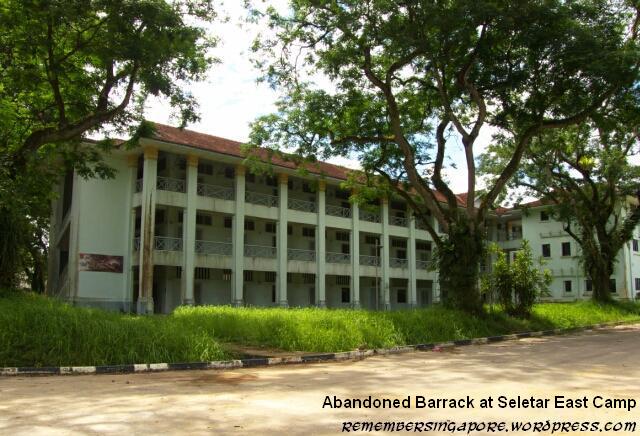
Due to the Seletar Aerospace Park project since the late 2000s, the quiet rustic Seletar Camp had gone through tremendous changes, with many of its old colonial buildings demolished.
Tanglin Barracks (1861-1989)
Tanglin Barracks were one of the oldest camps in Singapore. Built in 1861, it was situated in a former nutmeg plantation, functioning as a base for the British garrison infantry battalion. After SAF took over it in 1971, the camp was designated as the headquarters for the Ministry of Defence and the Central Manpower Base. Since the early 2000s, the premises around the vacated Tanglin Barracks had seen significant development as a hub for lifestyle, fine dining and cultural arts.
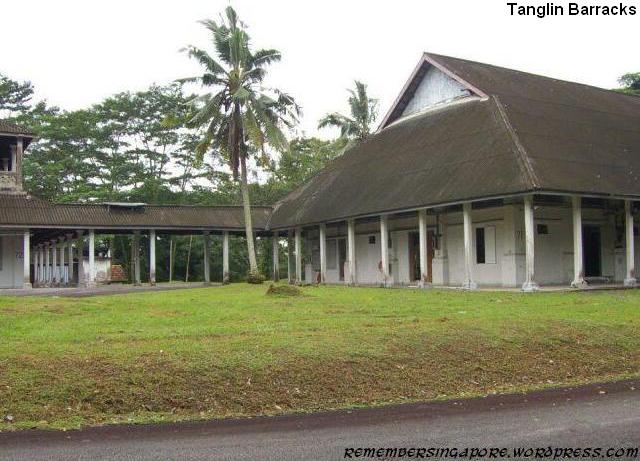
The list consists of other camps not mentioned above:

Saluting all former and current NS personnel!
Published: 01 May 2013
Updated: 19 October 2014
Discover more from Remember Singapore
Subscribe to get the latest posts sent to your email.

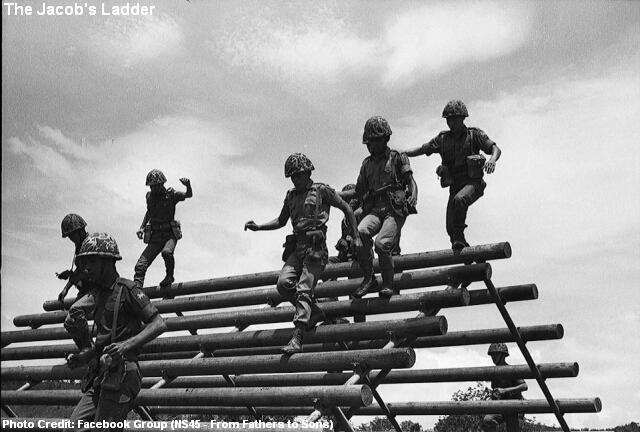
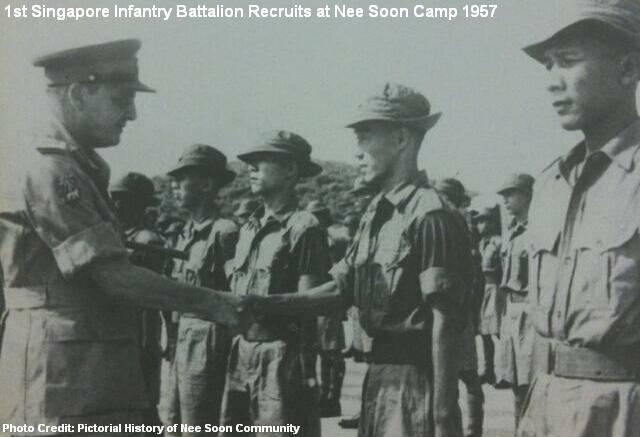
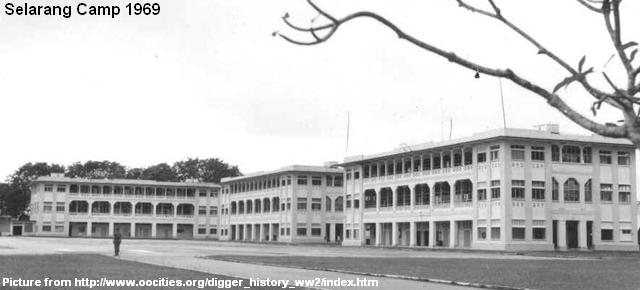


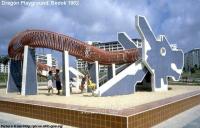





WoW…! I read not once but a few times and get to relive the memories serving my National Service (SAF 1st. Golf ~ 1981 Intake). Thank you for this wonderful effort.
Majulah Singapura
43 years ago at 1 SIR Bravo Company Platoon 4
contact :
Lee Shee Tuck neesoon_99@ yahoo.com
Hi, great work!
I served my NS in the Police Force, and the old Police Academy brings back a lot of memories too! So was my posting of 2 years at Police Headquarters in Pearl Hill…
Whao! Well done. Great job. I was in Safti 1969. 2 SIR 1970. 1 SIR 1971. 51 SIR till 1981. You cannot find this sort of writing on the Military history of Singapore anywhere. Perhaps you should consider writing a book on this topic. I’ll be first to “kee chiu” to buy it. Anyway thanks for the wonderful memories.
wow, respect to lau jiao!
btw, is it true that Dr Goh Keng Swee wanted to cultivate pineapple farms within the army camps as a self sufficient food supply?
lau jiao! I am old. I will be 64 this month. So old until I got mixed up with the dates. Thinking back it is 67/68 SAFTI. 68/69 2 SIR and 1SIR. I was in the old Holland Road Camp and then transferred to 1 SIR at Guillemard Road 3 months before I ROD. I also remember Tanjong Gul camp, which was home to 51SIR, or 3SIB. All camps are now closed. I also remember the SCDF camp along Telok Kurau Road where I had to report for my SCDF till 1990. I cannot recall anything about the pineapple farm project; although there were some talks at that time about growing vegetables, raising live stock etc etc on Batam Island. Yes. Once in a life time. And no more!
Yep, the pineapple farms owned by SAF as a source of self-sufficient food.
Location should be around Ang Mo Kio in the early 1970s
(Photo source: NS45 – From Fathers To Sons)
In the 70s, they also grew chye sim and bayam in an experimental hydroponic farm at Kranji Camp.
The farm cost $150,000, but they were able to produce 3,000kg of vegetable every month to supply to other eight camps, in an area of less than a hectare.
The farm helped to earn between $1,000 and $3,000 per month for the camp. Growing of kailan and lettuce were also attempted but not as successful as chye sim and bayam.
Source: http://eresources.nlb.gov.sg/newspapers/Digitised/Article/straitstimes19751008-1.2.55.aspx
If memory serves the pineapple farm was in Amoy Quee Camp
great piece!
Final batch of 2 Guards 1993-1995
me 2!
46 SAR 1998-2000 which was disbanded and a lot of us resevist in different units, I was the only person posted to a unit for reservist from my entire batallion. Heard most of them just MR already…. have not met any of the battalion people since 2000. I also just MR, every time go reservist very sian…..
46 SAR 1984-1986, thereafter same reservist unit as my platoon and batchmates all the way till standing down. Don’t think you know the dusty (dry) or muddy (wet) road from LCK to the main gate (which was further in). Many happy memories from that time in my life. Funny thing I was actually a bit sad when I got back my pink IC in 86.
Portsdown Camp II was used by 5SIR.
Rocky Camp Pulau Tekong is Tekong Camp I
Sangyongkong Pulau Tekong is Tekong Camp II
Both camp I & II were used by PDF reservists. Every December, camp I will be use for BMT recruits ( those who took A levels.)
HMS Terror is same as Sembawang Camp. Formerly Infantry Training Depot (ITD) for BMT recruits before it move to Tekong.
Dieppe Barracks was formerly used by 1st NZ Infantry Regiment.
Nee Soon Camp also house the School of Signal at one time.
The common Malay drill commands!
(some basic ones)
sedi-a – stand at attention
senang di-ri – stand at ease
kekanan lu-rus – face to the right, take alignment reference to the right)
bergerak ke-kanan, bertiga-tiga, ke-kanan pu-sing – turn to the right
bergerak Ke-kiri, bertiga-tiga, ke-kiri pu-sing – turn to the left
ke-blakang pu-sing – turn to the back
dari kanan/kiri cepat jalan – quick march
hentak kaki cepat hentak – quick march on the spot
berhenti – stop
keluar baris – turn right and fall out
Of the lot, I like “keluar baris”
The old Keat Hong Camp at Choa Chu Kang was demolished in 2012. New BTO estates (Keat Hong Axis, Keat Hong Quad and Keat Hong Mirage) are expected to be completed in the next few years’ time.
(Photo Credit: Google Maps)
lol the ee men still taste like rubber band noodles… even 3 year after ord, i still shun it
once i found a worm in my rice… i feedback to the cookhouse sergeant, and he told me to eat it cos it was rich in protein
>:
i was in Lakiun camp a few years ago… on the first day at lunch I took a plate and thought to myself, ‘wah lau the previous guy never wash his plate properly, still got rice on it’. then i realized that the rice grains were moving…
Hi there!
Thanks for the research into all this! Must have taken you a long time!
Appreciate the sharing… thank you very much..!!
Formerly:
Recruit (June 1975):School of Artillery Taman Jurong Camp
Vocational: (Oct 1975): School of Provost Mowbray Camp
Military Police: ( Nov 1975): 3rd Singapore Infantry Brigade Ulu Pandan Camp
Regimental Police ( Dec 1975): 2nd Singapore Infantry Regiment Holland Road Camp
ROD June 1977
Reserve Unit: ( June 1977)143 Peoples Defence Force Beach Road camp
Civid Defence ( 1983??) Hougang Camp
Now with waist line of 38 and still growing… ha! ha! ( still have original hair though!)
Just wanted to say that you must have been very happy that you did not progress to the other wings of the School of Artillery. By June 1975 all other wings were at Kangaw Camp only BMT Wing was in Taman Jurong. Basic Mortar, Arty NCO, BAOC (Basic Artillery Officers’ Course) & ATCAO (Advance Tactical Course for Artillery Officers) were all housed in Kangaw.
Much nicer surroundings but just as siong. While no more log PT runs to Jurong Hill, you could run, man pack and push the 120mm Mortar for mile after mile in Kangaw and if that got boring you could easily do it all the way to Dieppe Barracks on the other side of Sembaway airfield and even to Marsiling 265 as this was simply beyond the camp back gate!
What I remember best about Kangaw Camp were the accomodations. Kangaw was formerly a British Army camp. So we had HOT WATER! BATH TUBS and even seating toilets.
interesting
i always thought ROD is still in use (ORD, then ROD)
but technically ROD makes a different sense: no longer needed by MINDEF..
my platoon mate once greeted an officer during BMT: “good morning sir!”
“what’s so good about morning!? knock it down 20!”
from then onwards, i decided to stay low profile 😦
1) you forgot my camp nee soon driclad centre. beside nee soon camp.
2) from what my csm told me in bmt, the creepy bunk does still exist.
3) this guy in my brother’s platoon who sleeps beside the window saw the ghost of a old lady and the daughter. apparently the daughter said “look mummy one of them is looking at us.”
I took a look at my friend’s BMT bunk at Pulau Tekong during his visiting days in the mid 90s (I was enlisted three months after him)
it was those old long single-storey bunk with doors at both ends
his bed was almost at one end, and the door was locked with chains and pasted with talismans. Must be quite pressurized psychologically, but apparently he din witness anything supernatural
think the old bunk no longer exists liao
I’m from the early 90’s and the “Charlie Company” story was told to us by our instructor and that happened like 2 batches before us 0.0
I was the first batch of “A” level recruits in Charlie Coy platoon 9, Tekong Camp, Dec 1982. The only big event that happened was rifle dropped into the water during Waterman Ship Exercise. I slept on the lower deck of the bed right at the door less entrance. Encountered non of the spooky stuff.
Great post. I am from a more recent batch of NSmen, but it was interesting knowing more about the history of National Service in Singapore.
I myself didn’t witness anything supernatural during my NS days (thanks goodness!!)
the closest one was perhaps the rumours of a driver in my camp who secretly kept a toyol (gui kia) in his bunk…. heard he went to DB due to some driving offense, and his cupboard started to shake violently as though something was trying to get out (the toyol was not fed during his absence)
CO came to know about it, and had to hire a priest to “get rid” of it
the driver was charged again after that!
after a night range, i was picking up the empty cartridges at the 300m run down area with a few fellow platoon mates
it was very dark in the shooting range, there was no moon that night
suddenly, we heard a sharp loud laughter above us… as though an evil woman was laughing at us
we ran back to the ammo collecting area, my friend’s face turned white and he had to take a puff to calm down… he believed it was a pontianak
we tried to explain to each other that it was probably a night bird, but somehow we couldn’t convince ourselves how a bird could make a sound so similar to a woman’s laughter
might be an owl
The most notorious “haunted” firing range is at SAFTI’s Pasir Laba Camp. Is that the firing range that you’ve heard the woman laughter?
Can NS give meaning to a S’pore vision?
http://www.todayonline.com/commentary/can-ns-give-meaning-spore-vision
What does the Singapore model of NS have to say about Singapore as a nation-state and society — as well as of its core values? For Singapore, any discussion on the commitment to NS should move in tandem with the general socio-political discourse on the nation-state and society that Singaporeans want to build.
i like this article. very well-researched.
lky wrote about the establishment of our conscription army in his memoirs, also mentioned why the saf vehicles are prefixed with MID. of course he wrote from his high level point of view.
PS: i am not promoting his books. also not supporter of any political party.
for me, my memory of army is the water parade LOL
ld Mowbray camp or Home of SAF Police Unit (SAFPU) is located on a hill.
There are tunnels in the camp everywhere. Lao Chaios told us that the tunnels were dug and used by the British. Rumors were the tunnels were linked to Gombak and even to Labrador Camp and Sentosa. Not sure if it’s true. But in the past, someone did try to get into the tunnels and explore. Ended up dead in the tunnel and the body had to be retrieved out.
Also, Mowbray Camp was also the location of the siao on CSM who tekan the armory man. the armory man wanted to go to a hard rock concert but wasn’t allowed caused the CSM made him sign something like 30+ extra. That fateful day, he was in-charge of both arms and bullets as the other person was on leave. CSM came back in the evening and the guy took his chance and shot him. Then, he ran to the guradhouse but was stopped just before he could escape. He tried to shoot himself but failed.
Me, at Mowbray, never did encounter anything amiss. But others were sure they heard/seen something unworldly.
great article! thank you! brought back lots of memories.
i was at the old tekong camp 1 and used to march past the 3 door bunk everyday to get to the cookhouse. did 2 guard duties as well but never saw anything. it’s a beautiful place really and i quite miss it.
does anybody know what happened to the camp? is it still there?
I’m from Tekong Camp 1 too, Alpha Company! The only Company with a Commando CSM in the entire camp 1… LOL
I’m the last few to ROD on 6th Dec 1993 moring coz that night, Dr Yeo Ning Hong, Minister for Defence then announced the Troops to be called Operational Ready and that’s when they changed the term to ORD… LOL
LOL! Army Dayz – what can I say? Build up discipline, stiffen up backbone, inculcate never say die attitude & taught time consciousness. Those 2 NS years on hindsight built up a lot of invisible skills which is still relevant today. Due to eyesight, i did a downgrade stint as follows:-
3 months BMT @ Nee Soon Camp (Siong – 1st month very hot)
After BMT, posted to Seletar Airbase – School of Driver Training
Vocational Training – School of Clerical Training @ Seletar Airbase
15 months at Seletar Airbase as Clerk
Final 3 months @ Portsdown Road Camp before ROD/ORD.
I’d built up fast typing skills which later proved to be very useful when PC became popular. I’d learnt to make time for rest by finishing task quickly. Also, learnt to prioritise work by working on important issues & ignoring meaningless tasks.
I had an idyllic work environment as Seletar Airbase was pretty laid back compared to other camps. It was in army terms, “Tian Tong” or heaven on earth. Can’t really complain. After ROD, I was not called up for reservist & subsequently disrupted any reservist call-up for a few years by going overseas. After coming back in mid-80s, I was called up for reservist only 2 years later – I later found out that MINDEF had misplaced my file – ha ha! But by then reservist training was “siong” with emphasis on physical fitness/condition for 3km run. I did 2 stint of reservist training at Pulau Tekong which was in hindsight pretty idyllic as the OC of my platoon was a school mate – ha ha! I’d remember in my platoon there was a slow-witted guy – was really made fun of & bullied. I felt sorry for him! I though he should be discharged as there is no way he served the army. He was a danger – in a company exercise, he actually froze half-way up a hill refusing to climb up further but cannot climb down as there were others behind in a single line. It was hilarious! The NCOs later coaxed him up the hill. Some of my reservist mates & I went for seafood at the Dragon Gate restaurant – Loong Meng Ke Chang just outside the camp gates. It was good compared to army food. Anyway, my reservist stints ended as I managed to get exemption on medical grounds.
I am the guy you mentioned froze half way up the hill. In 1994 asperger syndrome autism was discovered. In 2007 saf started monitor asperger syndrome n average of 11 to 15 per year recruits in saf as it is rare and pre e9l9. In 2015 one female captain tormoited a e9l9 indian private who has both asperger syndrome n mentally ill n he commit suicide by jump off private condo n saf got sued. Then suddenly asperger syndrome become pes f automatically n cannot appeal upgrade as saf cannot guarantee which unit end up with so only way is no enter saf. But this is very unfair to me as I did my best during the army but asperger syndrome saf can only diagnose in 2007 as only discovered in 1994. At least I did not shit in bed n wear one uniform for entire week in Dec 2002 it’d Charlie company intake one guy triple science from jjc. Which I no doubt he has asperger syndrome but 2003 saf cannot diagnose so he go but. I have govt issued person with special needs card in 2014.
I must say however that (1)I am maybe born in the wrong era time before saf can do diag in 2007 (2)good point is I never thought I could force myself to do until i cannot take it. Reference 1992 1993 incident recruit shoots pc then suicide at alpha company it’d n rumors the soldiers now got much more psychological support than before . So I am tougher in my mind than i thought as compare to if I go e9l9 or pes f directly if I am born in 1990 or later as saf starts screening in 2017 for asperger syndrome autism
Awesome stuff.. I am a regular visitor to your blog, and am so happy to see a new topic…
Btw, the photo of Rapelling Training in 1980s, should have been for the “Basic Airborne Course” instead. In the photo, one can see the reserve parachute strapped to the front of the 2nd soldier. This would have been a tower jump training conducted at the Parachute Training Wing (PTW) back then.
Airborne… All the Way!!
What a wonderful piece of history for the male population … When you were in, you hated it, but after it was over.. it is great to sit and have laugh over that experience!
I did my BMT at SAFTI in 1977 disrupted, Came back to SAFTI 1978 finished my NCO course..
(OH, old timers of SAFTI will remember the glorious moment, when we are allowed to go to the canteen which we called “SAFTI-cana”, After the famous nightclub of the 70’s Tropicana )
Then became a BMT instructor, first posting to ITD ( Terror Barracks), followed by posting to Pulau Tekong for ‘A” level batch, at Camp 1, very interesting place, Most may not be aware that SAF women did a 1 month BMT course at a small camp off Tampines Road, called Tampines camp 1 which was run by PDF, ( PDF was called Party Dinner and Fun, because they were the reserve unit and the cook house food was good and had a relaxed atmosphere)
I was one of the instructors together with few female MPs taking female recruits for 1 mth BMT.. took a few batches of that, and just before my ROD in 1981, was posted to 40 or 42 SAR not sure at Kranji to take the recruits there, as all their own instructors were on what they termed as, on “project”, it was a hush hush exercise in Israel.. to learn from the best!
Thank you again for such a wonderful record, crisp and concise.
A photo of NSmen 1989
(Source: Facebook)
Can you recognise one of them who is a MP now? 😉
Before Stagmount Camp, it was the Royal Naval Wireless Station Kranji. Some of the old buildings might be still around.
Accommodation barracks for the station crew 1937
(Photo Source: http://www.rnmuseumradarandcommunications2006.org.uk/)
An aerial view of Royal Naval Wireless Station Kranji 1960s
(Photo Source: http://booksbyalfredleonard.com/page20.htm)
Royal Naval Wireless Station Kranji 1970s
(Photo Source: http://www.flickr.com/photos/lulipie/sets/72157627490851416/)
I missed NS by only a few weeks, but decided to joined the SAF as a full time for 3 years contract. My first camp was at Beach Road, but after basic training I was attached to 4 SIR at Taman Jurong Camp. Six months later I went for my instructors course, finished that as top trainee. I was back in 4 SIR A Coy Pl 2, but only for several months, because I was once again transferred to SAFTI and remained as an instructor until my ROD. I served 3 years and the contract did not require me to perform reservist training after my discharge.
My army days had been a long time ago and memories of my unit life have almost all faded . Occasionally when I see old pics of SAF, I can still recollect abit of my tough training in SAFTI , especially the punishment I got by one sadistic old staff sargent during field camp. I was a corporal. But because I left my rifle at the well and forget to hold on to it, I had to run up and down a hill for hours until I collapsed and was sent to hospital. That S/Sgt was the last of the old soldiers handed down from the Britrish days. Nasty guy with tattoos on his arms. Fuuny that he is the only face I still can remember but iIf I see him today I would probably spit into his face, LOL.
.
“There’s a Part for Everyone”, the National Day song in 1984…. first half of the clip shows a lot of memories of how far our NS has progressed
http://www.youtube.com/watch?v=kE-6Sy_7XQ8
A detailed description of Mr Ang Leng Sze’s memories when he was called up for the National Service in 1955:
http://a-boys-towner1954.blogspot.sg/2012/05/being-called-up-for-national-service.html
anyone heard of the Armour Black Day?
apparently there was a very old tomb at Sungei Gedong, and in the mid 1980s, two tanks flipped and overturned (in two consecutive years), and the commanders died.
from then onwards, that particular day (some day in August) was banned for training, and became infamous as the Armour Black Day
The SAF PT shoes of the 80s and 90s were more like kungfu shoes than running shoes
But they were extremely comfortable when it came to playing football on the basketball court 🙂
(Photo Source: Selarang Camp Heritage Room)
Hi, may I ask if these shoes were still in use for the 1995 new batch of recruits?
Thanks!
Yes, I belonged to the 1995 batch of recruits, and they issued these kungfu shoes to us 😀
SAF soldiers’ IPPT likely to change from next year
The Straits Times
Oct 23, 2013
Every soldier, airman and sailor may have to undergo a new physical fitness test from next year. The Singapore Armed Forces is looking to change the Individual Physical Proficiency Test, or IPPT, for the first time since 1982.
Key changes are expected to include the scrapping of the standing broad jump station and adding push-ups as a testing criterion, The Straits Times has learnt. Servicemen will also have to run 3.2km instead of the current 2.4km to test endurance over longer distances.
Earlier changes
1967: National service begins. Physical fitness test includes running 4.8km in 30 min, and completing 9.6km in 70 min while wearing the skeletal battle order.
1979: Individual Physical Proficiency Test (IPPT) introduced for all full-time national servicemen and regulars. Test – in army t-shirt, slacks and boots – includes push-ups, sit-ups, chin-ups, half-knee bends and the 2.4km run.
1981: Knee-bends are excluded.
1982: IPPT now made up of sit-ups, chin-ups, shuttle run, standing broad jump and the 2.4km run. Soldiers now wear singlet, shorts and running shoes.
During the 70’s, there is a type of National Service known as “par neow chi” (beating rats) in Hokkien. Do you know what is this?
Vigilante Corp.
guess who?

at School of Artillery, Taman Jurong Camp in 1973
LOL
By 1973 SAF Regulations, LTA Lee is out of uniform. His SBO webbing is not under his epaulettes!
It is a nice memory but is it the same now? I wonder if my son would feel the same way.
Who has stories of Mount Biang (Brunei trainings, torrential rains, giant ants, sand-flies, leeches, hantu, etc) to share? 😉
No mention of the Royal Signals camp for the Singapore District Signal Regt. Known as Calcutta Camp at Pasir Panjang where I served (UK) N/S 1951 -2. It was a tented camp and composed of MORs and BORs (Malayan and British ranks). It was the forerunner to the Princess Mary Barracks close by in the process of being built, . Completed around November 1952 and into which we were the first unit to occupy. Sdly it appears that Calcutta Camp has been completely
overlooked and forgotten in the history of British army camps on Singapore Island .
B D Phillips – ex R Sigs
Thank you very much for the effort in putting this article together.
Recently sent my only son for his NS army stint with the wife and daughters. Passing the baton on to the next generation. As for me, I did my full-time NS army stint from 17-Oct-1979 till 16-Oct-1981 (date forever etched in my mind). Did my BMT at Nee Soon Camp School 2 in Hotel Coy. The major incident during my BMT was towards the end of it when a gangster-type recruit threw a heavy 4×4 inch solid timber block across the bunk and hit my upper bunkmate square on his head. He was sent to hospital for emergency treatment. You can imagine the uproar the incident caused. The OC, then (Lt Amarjit Singh) and CO made the whole Coy stand in the hot sun until the culprit surrenders himself. We all stood at attention under the sun for 3 hours until the guy ‘one-step’ forward. Heard he was court-martialed and send to DB. Also heard (but unable to confirm) after full-time NS that the culprit was killed in a gang clash in Jurong area.
Another incident occurred earlier during section live firing when the Coy CSM (WO2 Jaffar) got bitten on his thigh by a stray dog and had to be sent to hospital too. One thing I hated and remembered clearly during the BMT was the area cleaning cos there was this Flame of the Forest tree over the QM store. Everyday sure would be lots of red-orange flowers and leaves to clear. As for the remainder of the 2-year, I was sent to OSB in Kranji to train and qualify as Technical Storeman; then posted out to 7 SIR before unit converted to 3 GDS in April 1980 and serving in 3 GDS until ROD in 1981. Unit life was more staid. Not many memorable incidents like in BMT. I still remember the CO’s name (then MAJ Titus Stephen).
A reminder of those days of daily area cleaning, rushed morning businesses and stories of haunted cubicles
(Photo credit: Facebook Group “Nostalgic Singapore”)
With regards to Grenade throwing section and the mention of the SBC The Army series. In 1970 2LT TAY SEOW KAI, School of Artillery BMT Wing Taman Jurong lost his life when a recruit he was supervising during live grenade throwing fumbled….
I attended that funeral. We just finished our recruit training at School of Arty
Outfield + Maggie mee = Best comfort food 🙂
(Photo Credit: The Straits Times)
My father was the first batch of FT NS and I did my duty 30 years later. Sadly Singapore now as over a million “new citizens” that did not need to do anything.
Hope to use this website to connect with my recruit mates at Blakang Mati in Jan 1970. I was in Charlie Company Platoon 7 Singapore Combat Engineers. We should be right now about 62 to 64 years old.
I served my 2.5 years from late 1989 to 1992. siong siong BRC but made life long friends and learnt to be tough and adaptable. the school of military intelligence course. that was seriously tough esp the topo exercises in thick forest . I learnt to think and plan under stress and not to be prideful and ask for help. I also learnt the importance of detailed planning and attention to details. most importantly, I learnt how to deal with all sorts of people. malingering was practically non existent in my coy and was generally very rare. nowadays, my friend who is a regular tells the malingerers and slackers are much more common . I know of this young punk who was faking all sort of illness and when the drs at the emergency room refused mc , he brought his mommy along. eventually he was caught partying while on mc and charged !! the parents kicked up a shit storm and claimed abuse ! thankfully he still went to db.
you from hq 7sib brc?
Central Manpower Base to move to Upper Bukit Timah Road
The Straits Times
Published on Sep 29, 2014
SINGAPORE – The Depot Road building where hundreds of thousands of young men have been called up for national service (NS) and pre-enlistment screening since 1989, is moving to a new home in Upper Bukit Timah Road.
Defence Minister Ng Eng Hen said in a Facebook post on Monday that the new Central Manpower Base (CMPB) will sit across upcoming Cashew MRT station, which will be part of the new Downtown Line 2.
The new building, which will be a stone’s throw away from the Defence Ministry in Gombak Drive, will be “easily accessible to the public”, said Dr Ng. “We are also using the opportunity to build more facilities for Mindef staff and visitors,” he added. “So over the next few years, the working environment will be better.”
Besides CMPB, the Depot Road camp also houses Mindef’s procurement arm, the Defence Science and Technology Agency, recruitment and media communications departments.
Dr Ng did not elaborate on when the CMPB will move, or if the other Mindef departments in the camp will be relocated. CMPB, which moved to Depot Road from Dempsey Hill in 1989, used to be where parents sent their sons off to report for duty.
Today, those who need to do NS go to the military complex for medical and aptitude tests. The screening, typically conducted six months before enlistment, involves X-rays, eyesight checks and resting electrocardiogram tests, among other things.
Hi, just to highlight that the rappel training picture is wrong, it’s the 35 foot airborne tower where trainee paratroopers does their mock jump before getting onto the plane, see the dummy reserve parachute when the trooper uses his left hand to hold. I must say, great effort. Kudos.
A new SAF milestone… Singapore’s first female BG! ⭐
http://www.channelnewsasia.com/news/singapore/saf-promotes-first-female/1942582.html
SAF promotes first female to Brigadier-General rank
26 June 2015
SINGAPORE: The Singapore Armed Forces (SAF) now has their first female Brigadier-General (BG). Col Gan Siow Huang was one of seven Colonels promoted to the rank of BG and RADM (One -Star) at the annual SAF promotion ceremony on Friday (Jun 26). She will assume her rank on Jul 1.
She was among the first four women to receive the SAF merit scholarship in 1993, and she now heads the Joint Manpower Department. In recent years, she has been making calls for more women to choose the SAF as a career.
Currently, close to 1,500 women hold combat jobs in the SAF, less than 10 per cent of SAF regular personnel. Every year, about 60 women join the army.
She said that women enter the competitive military environment late compared to their male counterparts, but over the years, there has been a gradual increase in confidence in their capabilities.
Despite making history, the SAF’s chief recruiter does not believe that her appointment will make it easier for women in the force to advance, “Every individual still has to put in their best. (At the end of the day,) it is still which individual is best for the job.”
The mother of three added that family support has been critical for her to get to where she is today. Her in-laws and her husband, a former regular, have both pitched in to help with the care of her young daughters who are between the ages of three and eleven.
“Being able to go to work everyday is a bonus, so I make every single day count,” she adds.
In total, SAF is promoting 413 officers, 74 military experts and 34 warrant officers from the Army, Navy and Air Force this year. They include Regulars and Operationally Ready National Servicemen.
Good bye to an icon…
the good’o hardy Land Rover that we are so familiar with
http://multimedia.asiaone.com/multimedia/gallery/end-legacy-production-land-rover-defender-stops
Before the rise of the SAF eMart…
(Photo credit: MINDEF)
Well Done…Excellent..brings back memories..
1979-1981 was in ESMB aka Electronic Supply and Maintenance Base – Portsdown Road.
Also had a unit called R&I Workshop, where the technicians used to repair communication equipments and a Field hospital unit where 20Ft/40ft containers containing medical equipments and an operating theatre used to be parked. All smart people …only the GD men,drivers, storemen get booked often…very sad. ;( Anyone from that period ??
Amazingly interesting and informative article. Thanks for sharing! I was at Dover Road Camp in 1977 and went to take a look at the area about a year ago but found the area unrecognizable. 😦
There is some fascinating reader in both the article and the comments. My interest is members of the Singapore Volunteer Force and its role during the Pacific War (1942-45). I am particularly interested in any lists of members and their fate once interned. I understand some were involved in Thai-Burmese Railway construction forces as well.
Chris
I was enlisted in Jan 1970 at School of Artillery Taman Jurong Camp. We were the pioneers of 21SAB. Nov 1970 we got an exchange with 20SAB & my Alpha Bty were transferred to 20SAB at Jalan Kambing off Kim Chuan Road Paya Lebar & we became Charlie Bty. The camp at Jalan Kambing was very secluded. Must walk about 30 mins from Upper Paya Lebar Road via Kim Chuan Road & then a gravel track to the camp. Later on we had a community service day to clear the way & they laid a tarred road. Our camp is very small. When we do guard duty it took us about 20 mins to walk around the camp. There’s no fencing. Just a ring of concertina barbwire surround the camp. So those who came back to camp late esp after midnight just jump across the barbwire. The barracks are made of wood & the walls have a foot clearance from the floor. When it rained the floors will be all wet
The “story” behind the mobilisation just before the National Day in 1991
A strong and silent keeper of the peace
David Boey
01 July 2008
The Straits Times
Even as the Singapore Armed Forces (SAF) marks SAF Day this evening with a parade, a sizeable number of military personnel will remain on guard – the vigilant lions protecting the Lion City.
But many Singaporeans may be unaware of this, believing all’s well. Apart from the threat transnational terrorists pose, the lack of a clear and present danger from a hostile nation might seduce them into viewing the world through rose-tinted glasses. Such naivety would not only be wrong, it would also be dangerous.
During a study visit I made to Malaysia last year, a senior Malaysian Armed Forces (MAF) officer shared with me an episode in Singapore-Malaysia relations that he said occurred during a period of tension.
According to the officer, the MAF was put on alert in late 1998 as politicians on both sides of the Causeway argued over the status of the Customs, Immigration and Quarantine (CIQ) checkpoint at Malaysia’s railway station in Tanjong Pagar.
News articles from the period chronicle the public exchanges, but say nothing of the defence postures that the SAF and MAF adopted during this period.
Kuala Lumpur’s unwillingness to acknowledge its heightened military preparedness – which military officials on both sides privately acknowledge did occur – was an astute move.
It indicated a tacit acknowledgement on the part of Malaysia’s defence officials that they could not allow the CIQ issue to flare into a casus belli. The full force potential of the SAF when mobilised renders it a formidable opponent.
There were other telling signs that bilateral ties were not well during that period. These included Singapore’s decision to conduct two open mobilisation exercises in September and October 1998. Records indicate that the SAF rarely calls up its manpower in successive months.
It should be noted that such open mobilisation exercises – overt call-ups of defence manpower broadcast over television, radio and in cinemas – are probably complemented by silent mobilisations. Few beyond Singapore’s defence establishment would be aware of this.
The CIQ episode resembles an earlier episode in Singapore-Malaysia relations when military power was flexed in a show of force, apparently to intimidate the tiny island nation.
Operationally Ready National Servicemen who served in 1991 would recall the joint Malaysian-Indonesian military exercise, codenamed Malindo Darsasa 3AB, that occurred that year. It involved an airborne assault by paratroopers in southern Johor.
If the name of the airborne assault, codenamed Pukul Habis (Malay for ‘Total Wipeout’), as well as the choice of a drop zone just 18km from Singapore, were not sufficiently provocative, the scheduling of the airdrop on Aug 9th – Singapore’s 26th National Day – most certainly was.
The SAF’s response was measured and confident. It triggered an Open Mobilisation on the eve of National Day, a fact that was reported extensively in the local media.
The move was calculated not to escalate tensions. But it signalled also Singapore’s determination not to welcome a Trojan horse on its doorstep.
Such episodes cannot be kept secret from NSmen, of course. But because they were deliberately kept low key, many Singaporeans were probably unaware of the full picture. Consequently, they may have failed to see the relevance of a strong military.
Singapore has warm and friendly ties with its neighbours. It will often go the extra mile to keep things on an even keel with them. But Singaporeans should understand and accept that there are always undercurrents in bilateral relations.
Those who wonder about the relevance of the SAF should ponder how these past episodes might have panned out if Singapore had yielded to military pressure.
A strong and vigilant SAF is Singapore’s hedge against trouble. Singapore’s formidable military arsenal – and, more crucially, the fighting spirit of its citizen soldiers – are guarantors of peace.
http://www.asiaone.com/News/the%2BStraits%2BTimes/Story/A1Story20080701-73867.html
Ever since the recent death of an NSF people has been questioning the relevance of NS whether it should continue in such peaceful times. War can erupt anytime & sometimes without due cause just like Kuwait. One moment so peaceful & the next got conquered by it’s neighbour. We need a strong army as a deterrent so our neighbours will think twice before acting rashly.
When NS first started in 1967 the Vietnam war is raging. Everybody is fearful of the Domino Principle that should Vietnam falls to the Communists the rest of the nations like Cambodia, Laos, Thailand, Malaysia & SG will fall like dominoes. Thankfully it didn’t happen but still the fear lingers. When SG bought the E2C Hawkeye AEW everyone breathe better because now they have at least an hour of warning if a strike force take off from Vietnam.
If we don’t bleed in training we can never be strong & if a war comes it may jolly well be the last.
I served my NS in 1971 and left for overseas soon after that. Now 47 years later I am living in Australia where there is no NS. Young people are into drugs and the Govt. cannot cope. Their jails are so full that they have to give very light sentences and quick and easy parole. Take my advice, Singapore – keep your NS at what ever costs (even a few deaths). It instils discipline in young people and teaches them a trade at the crucial time in their lives. Whenever I visit Singapore with friends they are amazed by the safety and cleanliness. A place like Gardens by the Bay, in Australia, would be full of used syringes and if you are game to get yourself mugged, raped or kill, go there at night.
Well said, look at the current escalation.
Oops, wrong thread, meant for the one before.
Everyone is entitled to their own opinion but not their own facts. Daniel Moynihan’s quote is applicable I suspect. Singapore’s incarceration is considerably higher than Australia’s (201:175 per 100k) and some quick digging will show that drug offences are not overly different to other countries such as Singapore. The safest countries are a little harder to define as it depends on the definition of safety. Singapore is rated first in some indexes while it is rated below Australia in others. The realty is that Australia, arguably the second wealthiest country on earth, is a very safe place on a global scale. Which is why I suspect the correspondent lives there. I spent much of my working life in developing countries before retiring back to my place of birth because I was getting to old for the risks and to tolerate the treatment of women and minority groups that comes with poor levels of education, poverty and constraints on political expression. Those who follow the political hyperbole of Australia’s current discourse on immigration or drugs can be forgiven for falling for the propaganda only in so far as they don’t check the facts. As an aside. I did two years in training in Australia in 1960s and 70s when we had NS in order to fight a series of futile wars in South-East Asia. I think you will find that the rate of drug consumption by troops from ourselves and the US were fairly alarming. Meanwhile back on the home front we heard from the same political cohort that drugs would lead to communism. Eventually, as in Portugal et al, drug use will be viewed as a health issue rather than a moral or criminal one.
Re: Hand Grenade Training photo on this site :
LTA Baldiv Singh of 30th Singapore Combat Engineers doing Basic Military Training ‘Live Hand Grenade’ training with a Recruit at SAFTI Hill.
Picture #20 from top isn’t rappel trg, that’s the 34 ft airborne tower in the old Hendon Camp for training the exit from the skyvan use for live descent during the Basic Airborne Course. Year is right.
Looks like I had left my comment before.
I am pushing 69 and I had served as a Rifleman , I am very proud that i was drafted into the first batch in 1 SIR ,
Life was more tougher than today as we had next to nothing after Independent ,
Ols timer will know how was our trainings
what is safety has never cross our minds.
NO BIG DEAL, if every body follow procedure, there is no problem on safety.
Look at the latest events surrounding us.
This is a another good reminder that we have to do our training seriously otherwise they think we can be “Makan” , Do You want to be “Makan”
think about it
DennisLee
12 SAF ACRONYMS YOU NEED TO KNOW
07 Jan 2020 PIONEER
1) 11B
Ahh, the very first “present” you’ll receive upon enlistment – in exchange for your pink NRIC. This green card will be your new form of identification throughout your National Service (NS).
And for those who sign on, this is their only identification card until they leave service.
For the uninitiated, 11B stands for 11 Basic Information. This includes your name, NRIC number, photo, race, blood group, birth date, country of birth, sex, service status, military rank status and address.
Tip: Having it entitles you to discounts and promotions on occasions like SAF day. And losing it means paying a fine of $50 and a dressing-down from your CSM (see acronym no. 10). So guard it well.
2) 5BX
It’s the best wake-up call you’ll ever get as a recruit. Just one round will rouse every lazy bone in your body.
5BX or 5 Basic Exercises consist of jumping jacks, the high jumper, crunches, push ups and running. It’s also the most common form of PT (Physical Training) you’ll encounter during NS.
Did we mention that it typically starts at 5.45am during Basic Military Training (BMT)? Time to prep yourself, both physically and mentally.
3) SOC
The Standard Obstacle Course or SOC is also known as the soldiers’ playground. For the less physically inclined, it can be more challenging than fun.
Consisting of 12 stations, the SOC begins with the Low Wall, followed by Stepping Stones, Rubble, Tunnel, Dodging Panels, Low Rope, Ditch, Corridor, Balancing Bridge, Window and Apex Ladder, before ending with the Terrace.
Redesigned in 2010 to reflect an increasingly urbanised operating environment, the SOC aims to better develop soldiers’ strength, agility and endurance for basic combat movement and tasks.
It is here where recruits face their worst fears like acrophobia on the Apex Ladder station or having weak arms while trying to scale the Low Rope.
And when doing the SOC, you’ll be geared up with the Singapore Assault Rifle (SAR) 21 and the iLBV, which means that you’re carrying more than just your body weight.
4) iLBV
You know how Singaporean uncles love to wear vests with loads of pockets whenever they go overseas? The Integrated Load Bearing Vest or iLBV looks something like that.
Except that instead of wallet, keys and sunglasses, you’ll be carrying soldiering equipment like the dummy grenade, toggle rope, arc of fire sticks, range card and torchlight.
5) IFC
Think field training 101. Digging shellscrapes? Check. Learning how to camouflage the SAF way? Check. How to scout ahead and attack targets in the jungle? Check.
Individual Field Craft or IFC is one of the milestones that every recruit will learn. From picking up field observation skills and tactical movements for both day and night, to life-saving tips such as how to break your fall while holding your rifle, it is often an eye-opening experience for city-dwelling recruits.
This is also the segment where fire movement drills are taught, where soldiers must learn to quickly take aim with their rifle in different positions like turning, proning, kneeling and standing. There’s also the dreaded leopard crawl (while carrying your rifle) to avoid being spotted by the enemy.
Sounds tough? It’s only the beginning.
6) IMT
The Individual Marksmanship Trainer, or the IMT, is where recruits practise their shooting in a safe yet realistic environment before firing for real. The indoor centre simulates a live-firing range and allows recruits to learn to fire their weapons accurately in a variety of shooting positions.
More importantly, the IMT also equips recruits with important safety knowledge and instils firing confidence. The IMT is sheltered and air-conditioned but that only means the training will carry on no matter the weather condition.
7) PC
The Platoon Commander or PC position is usually helmed by a junior officer who holds the rank of either 2nd Lieutenant or Lieutenant.
He or she is the person whom you’ll see day in day out, and is in charge of the platoon as a whole.
Other commanders you’ll meet daily will be your section commanders (usually Specialists holding the rank of 3rd Sergeant). They report to the platoon sergeant, who in turn reports to the PC.
8) OC
The Officer Commanding or OC is the person whom the PC reports to. The role is often taken up by a more experienced officer holding the rank of Captain.
This OC is the overall-in-charge of a company, which consists of four platoons.
Don’t be a blur sotong: Always know the rank hierarchy so that you recognise who you’re addressing!
9) CO
Usually helmed by a senior officer of Lieutenant Colonel (LTC) rank and above, the Commanding Officer or CO is in charge of a battalion or, in the case of BMTC, a school.
If you don’t already know, there are a total of five schools in the Basic Military Training Centre (BMTC) – four in Pulau Tekong and one in Kranji Camp II.
10) CSM
The role of the Company Sergeant Major or CSM is somewhat akin to the logistics or operations manager. In addition to ensuring that the day-to-day operations are run smoothly, he or she is in charge of enforcing regimentation and discipline within the company.
These enciks (Malay term for warrant officer) may look pretty fierce and tough, but don’t be too intimidated. They often make great life advisor and usually have plenty of interesting SAF stories to tell!
11) RSM
The person you do not want to mess around with. The Regimental Sergeant Major or RSM is the disciplinarian of the camp.
Hair getting a tad long? Uniforms out of place? This eagle-eyed person will spot these faults from far away and make sure that you adhere to the proper SAF standards. Just don’t get into his bad books and you’ll be safe.
12) AWOL
One of the easiest ways to get into big trouble: Under military law, being Absent Without Official Leave or AWOL simply refers to a soldier who is not where he or she is supposed to be, and not having a valid reason for their absence.
If found guilty, this can result you being thrown into the detention barracks for at least two weeks.
Our advice? Don’t even think about it lah.
https://www.mindef.gov.sg/web/portal/pioneer/article/feature-article-detail/ops-and-training/2020-Q1/07jan20_news1
I think the old SOC run down is not just 50m. I remember it was something like 700m before obstacles and then 600m after obstacles
I think last year there was news on Winston Choo grandson and it was made into a clip at Mothership channel. I shared my experience in the comment that Choo’s son was in my BMT in another company. And that as a white horse company, they always got lights out earliest when other companies were still doing their monkey business in the parade square. Too bad that channel deleted my comment.
Life is a joke .Do not want to compare white horse to work horse. Just our luck ,that we are born at the wrong time and wrong place , but appreciate what you have and you’re a happy man. So when people talk about life in NS , just say Ohhh… Today I am 70 , served N S from 1968 to 1970 . I was in 1 SIR.
Attend NDP in 1969 and in 1970 Guard of Honor just less than a month before my ROD (don’t know what they called it now) . Those who had been in the parade will know how many weekends got burned but I believe that NS in the combat service makes a better disciplined person .
The article mentioned about the passing time for SOC for BMT was 9 mins. But I believe it was like 10 mins. Then for Safincos it became 9 mins 30 sec.
http://ocs-delta-10.blogspot.com/2018/03/the-taiwan-di-xia-jie-incident-1980s.html
hmm… anyone heard of this incident before?
I remember the 300m range well
had to charge forward after the long distance shots *panting*
but the last part was the easiest to aim and shoot because it was very near to the target boards
(Photo Credit: Facebook Group “Nostalgic Singapore”)
For myself, I am a bobo shooter at the hip region at the near target. Always missed the target. I did better at the 300 m. I remember in BMT I was once too slow to fire the weapon. So I just followed the instructions to ease spring squeeze trigger. So a round shot out. The junior officer there was like so excited and shouted Who’s That!! You Misfire! I was sent to see the PC but he was quite cool and didn’t scold me. But I think I did ganna a weekend duty during BMT due to this. And my idiot regular Sergeant DI was on duty too. It was a Saturday duty. On Sunday morning, my two peers and I were doing area cleaning but not wearing our head dress. We never knew that we have to wear head dress for area cleaning. The sergeant when booking out was furious, he abused us on the spot like doing Push ups in the toilet. Then he asked the guard commander to inform the next batch of duty personnel not to book in and asked the three of us to sign Sunday extra. Really piece of work sergeant
The little known and heritage gems at Pulau Tekong
Bidding goodbye to the good old SAW soon….
New light machine gun for Singapore Army enters service
20 May 2024
The Straits Times
Infantry soldiers here have started using a more reliable, accurate, and ergonomic light machine gun (LMG) that is better suited for close-quarter combat.
The Singapore Armed Forces announced on May 20 that the Army has progressively been equipping its soldiers with the Infantry Automatic Rifle (IAR) 6940E-SG since April 2024, replacing the Singapore-made Ultimax 100 Section Automatic Weapon (SAW), which has been in service since 1982.
Made by US-headquartered Colt’s Manufacturing, the 6940E-SG LMGs were evaluated and procured in partnership with the Defence Science and Technology Agency, the SAF said on Facebook.
The new LMG comes with “many features that provide enhanced lethality, improved ergonomics and customisation to better suit the needs of our soldiers”, it added.
For instance, fire controls can be accessed from both sides of the weapon, which means both left- and right-handed soldiers can operate the LMG with greater ease.
The new LMG’s foregrip and buttstock can both be adjusted for a more personalised fit, while a picatinny rail allows for the weapon to be customised with new modules to meet the army’s future needs.
LMGs are infantry support weapons for an individual soldier to provide suppressive firepower so that a squad of soldiers can move or advance.
In a 2016 issue of Army News magazine, the SAF noted that the SAW was being used by at least 12 countries, including Brunei, Peru and the Philippines.
In its Facebook post, the army quoted two soldiers who shared their experience using the new LMG.
Third Warrant Officer Muhammad Noh Muti, a platoon trainer at the SAF’s Motorised Training Institute, said Colt’s LMG has surpassed the SAW in terms accuracy and reliability, while being more suited to tight spaces and urban operations.
With its buttstock retracted, the 6940E-SG rifle is 85cm long, or 17 per cent shorter than the SAW it replaces.
The new rifle also has a red dot sight and 3x magnifier scope, as well as a multi-purpose laser aiming device and torchlight.
“With its ability to switch its magnification from 1x to 3x, it enables our soldiers to acquire targets at multiple ranges and varying terrain,” said 3WO Muhammad Noh.
A photo of the LMG released by the SAF also showed a large capacity drum magazine next to the standard 30-round magazine.
The Straits Times has identified the drum magazine as the PMAG D-60 lightweight magazine made by Magpul in the US, which can hold up to 60 bullets.
ST has asked Mindef when the SAF plans to complete the transition from the SAW to the LMG, and whether the LMG will be built in Singapore.
The Republic has produced the Colt AR-15 and M-16 rifles under licence for its own use since the 1970s, and the LMG is based on the M-16 and M4 carbine family.
A report prepared for the foreign affairs committee of the US Congress dated August 17, 2023, said that Colt had sought the sale of 1885 5.56mm-calibre M4 fully automatic rifles to Singapore in July that year, with the price listed as US$3.19 million (S$4.3 million). It is unclear if this was referring to the IAR 6940E-SG.
Colt’s LMG was in the running for the US Marines’ own IAR programme, which concluded in 2010. The rifle is also being used by Mexico’s Marine Corps.
Singapore’s selection of the LMG was first reported by defence industry publications in May 2023, when a video of the army’s work year showed the weapon, which was called the “New Section Automatic Weapon” without identifying it.
Mindef said at the time that it had conducted extensive trials and evaluations of various weapon models as part of its continued force modernisation, and that the IAR 6940E-SG had been assessed to be a suitable replacement for the SAW.
https://www.straitstimes.com/singapore/new-light-machine-gun-for-singapore-army-enters-service
Cyclist shot near SAF range: How far do Singapore military rounds travel?
17 June 2025
Channel NewsAsia
A weapon’s maximum range is the furthest a bullet can travel, while its effective range is the distance at which a weapon may be expected to be accurate and achieve the desired effect. The maximum ranges for the weapons used by the SAF are not readily available.
While the circumstances remain under review, the incident has prompted questions about the range and reach of weapons used in SAF training.
Here’s a look at some of the firearms commonly used by military personnel in Singapore, including their effective range, or the distance at which a weapon can reliably hit a target.
SAR 21
Technical specifications
Calibre: 5.56mm x 45mm
Length: 805mm
Barrel length: 508mm
Weight: 3.98kg
Rate of fire: 450-650 rounds per minute (rpm)
Effective Range: 460m
The SAR 21 is described by MINDEF as the quintessential assault rifle of the Singapore Armed Forces. Introduced in 1999 to replace the American M16, the Singapore-made SAR 21 is about 20 per cent shorter than its predecessor, allowing soldiers to move more easily in confined spaces.
The rifle also features a built-in aiming scope with 1.5x magnification. Its low recoil gives soldiers better control over the rifle, allowing for faster recovery between successive shots. It can also be equipped with a grenade launcher.
Colt Infantry Automatic Rifle 6940E-SG
Technical specifications
Calibre: 5.56mm x 45mm
Length: 849mm – 933mm
Barrel length: 406mm
Weight: 4.3kg
Rate of fire: 700rpm – 1,000rpm
Effective range: 600m
Made by United States-headquartered Colt’s Manufacturing, the Colt Infantry Automatic Rifle (IAR) 6940E-SG light machine gun (LMG) is Singapore’s replacement for its indigenous Ultimax 100 Section Automatic Weapon (SAW), which had been in service since 1982.
Compared to its predecessor, the Colt IAR is shorter, lighter and has a longer effective range. It also has a higher fire rate, and is capable of longer, sustained firing bursts thanks to improved cooling from its heat sink. Its red dot sighting system helps with faster and more accurate target acquisition over the iron sights of the Ultimax 100.
7.62mm General Purpose Machine Gun (GPMG)
Technical specifications
Calibre: 7.62mm x 51mm
Length: 1,255mm
Barrel length: 569mm
Weight: 11.4kg
Rate of fire: 650rpm – 1,150rpm
Effective range: 1,200m
SAF’s 7.62mm General Purpose Machine Gun (GPMG), known colloquially as simply GPMG, is the Singapore-licensed production of the Belgian FN MAG. Manufactured by ST Engineering, the GPMG is a fully automatic belt-fed machine gun that can be used as a light weapon and in a sustained fire role.
The GPMG has two versions – an infantry assault variant with a bipod, and a co-axial variant for use in armoured vehicles, such as Singapore’s Leopard 2SG main battle tanks.
STK 50 MG
Technical specifications
Calibre: 12.7mm x 99mm
Length: 1,670mm
Barrel length: 1,141mm
Weight: 30kg
Rate of fire: 400rpm – 600rpm
Effective range: It is difficult to find definitive data on the effective range of the STK 50 MG, as the weapon was developed in the 1980s, and detailed technical specifications have not been widely published online. However, estimates place this between 1,000m and 2,000m, depending on factors such as ammunition type, mounting platform, and firing conditions.
The STK 50 MG is a locally developed, belt-fed, heavy machine gun for fire support against infantry, light armoured vehicles and low-flying targets.
Formerly known as the CIS 50 MG, the STK 50 MG was developed by then Chartered Industries of Singapore (now ST Engineering Land Systems) in the late 1980s to replace the American “.50 cal” M2HB Browning machine guns.
A unique feature of the STK 50 MG is its dual-feed ammunition mechanism that allows for the fast and easy switching of different types of ammo.
Knight’s Armament M110
Technical specifications
Calibre: 7.62mm x 51mm
Length: 1,190mm
Barrel length: 508mm
Weight: 6.27kg
Rate of fire: Semi-automatic
Effective range: 800m
The M110 is an American sniper rifle developed by Knight’s Armament Company. Used by the SAF since the early half of 2010s, it replaced older sniper rifles in Singapore’s use, such as the SR-25.
Equipped with an adjustable scope, the M110 can fire off multiple rounds without the need to cock the weapon between rounds. Because it can engage faster, it is used for covering troops in built-up areas.
Sako TRG-22
Technical specifications
Calibre: 7.62mm x 51mm
Length: 1,150mm
Barrel length: 660mm
Weight: 6.2kg
Effective range: 1,000m
Rate of fire: Bolt-action
As with the M110, the Finnish Sako TRG-22 was brought into service in the SAF in the early 2010s to replace older sniper rifles, such as the United Kingdom’s Accuracy International AWM rifle.
Compared to the M110, the TRG-22 has a longer barrel length, allowing it to hit targets farther away. However, as it is a bolt-action rifle, the gun is slower as it needs to be cocked after every round. The TRG-22 is used for field firing, which includes stalking enemy targets.
https://www.channelnewsasia.com/singapore/cyclist-shot-near-saf-range-how-far-do-singapore-military-rounds-travel-5186751
Loads of memories, good or bad, for many batches of NSmen going for IPPT and RT at Maju Camp….
IPPT, NSFit sessions at Maju Camp to move to new CMPB facility
16 September 2025
The Straits Times
Maju Camp has served as a location for NSmen to fulfil their yearly IPPT obligations since 1991. At the time, the IPPT circuit was split across five stations – sit-ups, standing broad jumps, chin-ups, shuttle runs and a 2.4km run.
This was eventually streamlined to three stations – push-ups, sit-ups and 2.4km run – in 2015.
https://www.straitstimes.com/singapore/ippt-nsfit-sessions-at-maju-camp-to-move-to-new-cmpb-facility